Fall 2022 PEAK Experience Awardees Leap into Autumn
We are delighted to share the names of our fall 2022 PEAK Experiences Awardees. This extraordinary group of students is taking on a range of exciting projects, from exploring axolotl limb regeneration to building a snake-inspired robot to understanding accessibility on Broadway. We’re thrilled to support their work and eager to see where their ambitions and talents lead.
BASE CAMP AWARDS
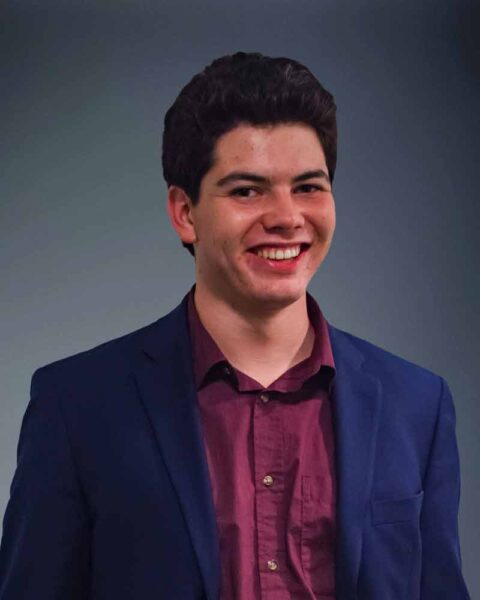 Ezri Abraham COS’25, “Engineering a Generalizable Feedback Regulation Platform to Enhance Protein Secretion in E. coli Nissle 1917”
Ezri Abraham COS’25, “Engineering a Generalizable Feedback Regulation Platform to Enhance Protein Secretion in E. coli Nissle 1917”
Mentor: Neel Joshi, COS, Chemistry and Chemical Biology
In the Joshi lab, I am engineering non-pathogenic E. coli to optimize the production of various proteins. The goal is to apply this work toward developing a therapeutic-secreting probiotic to treat gastrointestinal diseases, such as Inflammatory Bowel Disease.
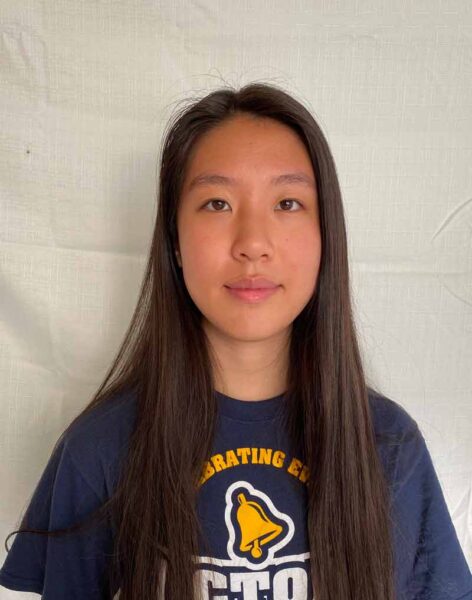 Jennie An Khoury’24, “Stress Measurement Using Wearables: A Systematic Review”
Jennie An Khoury’24, “Stress Measurement Using Wearables: A Systematic Review”
Mentor: Aarti Sathyanarayana, Bouvé, Health Sciences
My research topic is identifying high-stress/anxiety moments using some tool/ubiquitous data in college-aged students. We will synthesize current works on this topic as a paper in the form of a systematic review that professionals can reference.
 Pranali Ashara COS’25, “Screening of Unknown Emerging Contaminants in Boston Surface Waters”
Pranali Ashara COS’25, “Screening of Unknown Emerging Contaminants in Boston Surface Waters”
Mentor: Zhenyu Tian, COS, Chemistry and Chemical Biology
Unknown organic micropollutants in low concentrations in surface water bodies, such as the Charles River in Boston, can threaten environmental and human health. These compounds can be identified through non-target analysis to provide insight into their interactions, toxicity, and quantity.
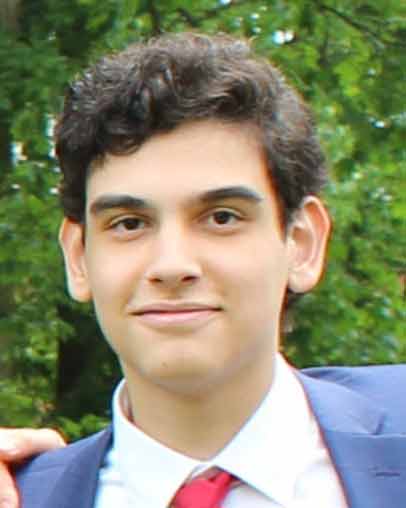 Ahmed Bekdash COS’25, “Learning to Culture Modified DNA”
Ahmed Bekdash COS’25, “Learning to Culture Modified DNA”
Mentor: Jiahe Li, COE, Bioengineering
I will be learning how to culture bacteria using PCR and how to insert specific DNA sequences using electroporation.
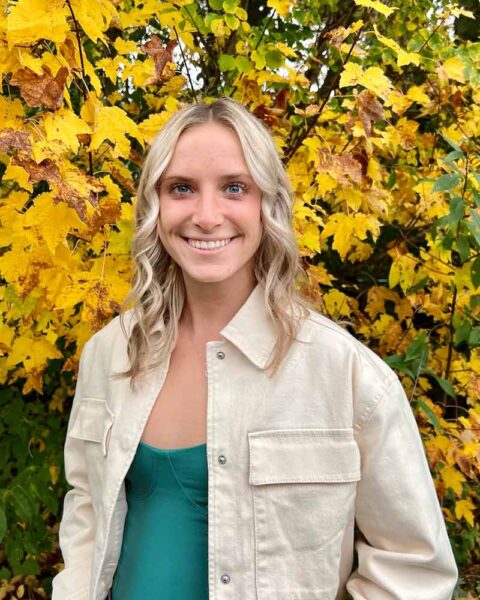 Alexis Dean Bouvé’25, “Sibling and Twin Relationships”
Alexis Dean Bouvé’25, “Sibling and Twin Relationships”
Mentor: Laurie Kramer, Bouvé, Psychology
Our research aims to learn more about sibling relationships throughout the transition to college. We are interested in learning about the factors that affect whether siblings end up at the same or different colleges and form similar/dissimilar career plans.
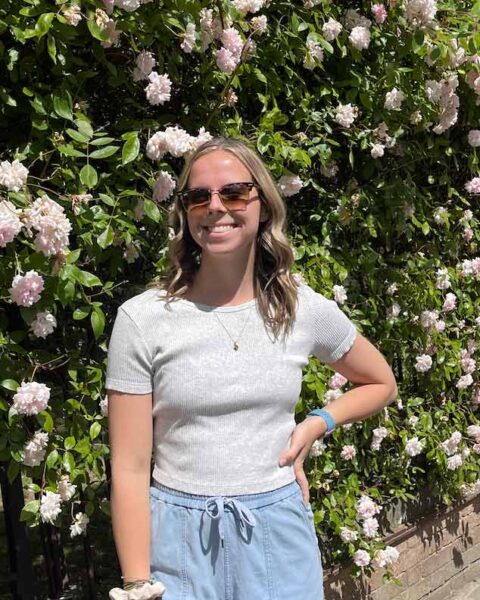 Cassandra Dean Bouvé’25, “Sibling and Twin Relationships”
Cassandra Dean Bouvé’25, “Sibling and Twin Relationships”
Mentor: Laurie Kramer, Bouvé, Psychology
Our research aims to learn more about sibling relationships throughout the transition to college. We are interested in learning about the factors that affect whether siblings end up at the same or different colleges and form similar/dissimilar career plans.
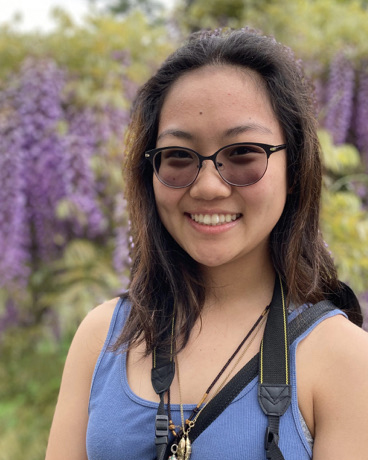 Dawning Fu COE’26, “Leveraging Quantum Computing to Predict Protein Folding Landscape”
Dawning Fu COE’26, “Leveraging Quantum Computing to Predict Protein Folding Landscape”
Mentor: Srirupa Chakraborty, COE, Chemical Engineering
Predicting protein folding is one of the most complex challenges in biology. Modeling folding with classical methods is computationally exhaustive; leveraging quantum computing can vastly accelerate simulation time by harnessing tunneling effects. I will investigate protein folding performance in quantum computers and apply it to improving quantum annealing computing applications in bioengineering.
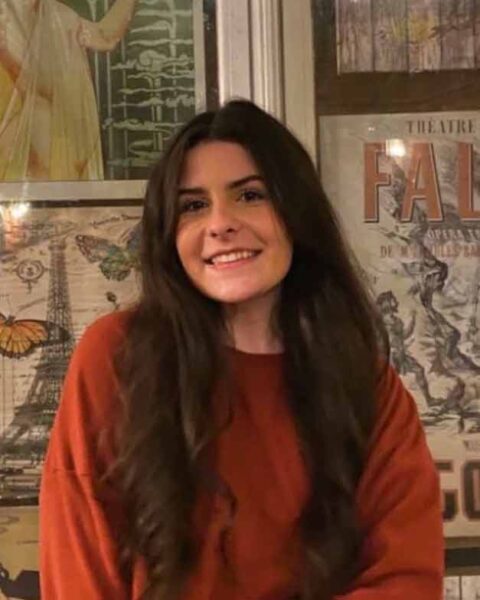 Madalon Hammell COS’25, “Retroactive Memory Role in Reward Decision Making”
Madalon Hammell COS’25, “Retroactive Memory Role in Reward Decision Making”
Mentor: Juliet Davidow, COS, Psychology
This project aims to study the role of reward in retroactive memory enhancements and decision-making by testing how different reward conditions enhance the memory of various stimuli (faces, houses, and objects) and how these rewards can create memory associations.
 Shanthi Hegde COS’25, “Characterizing Chronic Pain in the 17th and 18th Century”
Shanthi Hegde COS’25, “Characterizing Chronic Pain in the 17th and 18th Century”
Mentor: Victoria Cain, CSSH, History
Chronic pain has been characterized as an invisible illness, but this etymology in female BIPOC communities remains to be elucidated. Therefore, to fully understand chronic pain and the treatment of females, I plan to address the historical context of chronic pain in BIPOC females in the 17th and 18th centuries.
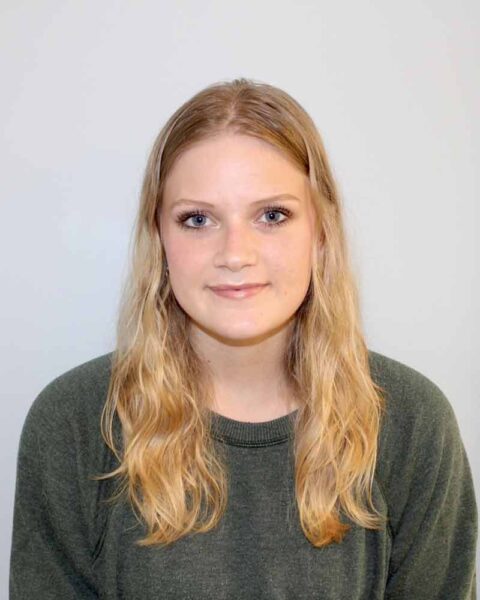 Rachel Holly COE’26, “Drop Evaporation with Particles”
Rachel Holly COE’26, “Drop Evaporation with Particles”
Mentor: Xiaoyu Tang, COE, Mechanical and Industrial Engineering
This research studies the fluid mechanic principles of droplet evaporation, specifically focusing on the “coffee ring” effect and the factors that could impact the morphology of particle deposits for different solutions after evaporation is complete.
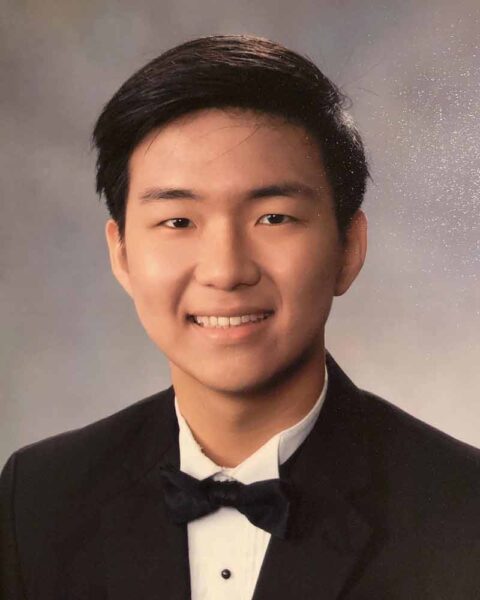 Zachary Kim COS’25, “DNA Sequestration Using dCas9”
Zachary Kim COS’25, “DNA Sequestration Using dCas9”
Mentor: Neel Joshi, COS, Chemistry and Chemical Biology
I will engineer E. coli to produce a functioning dCas9, which will be used to sequester and concentrate sequence-specific DNA.
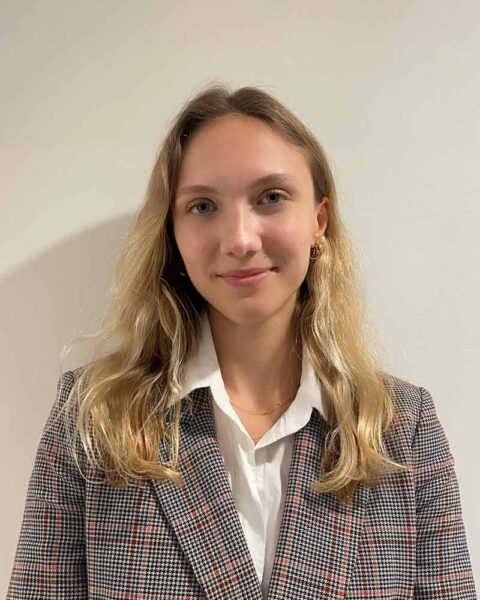 Sabrina Krista Bouvé’24, “Public Health and the Right to Affordable Water”
Sabrina Krista Bouvé’24, “Public Health and the Right to Affordable Water”
Mentor: Laura Senier, Bouvé, CHHS, Institute on Urban Health Research
I am a research assistant responsible for analyzing, coding, managing, and interpreting interview data from residents and municipal authorities in Pennsylvania and Massachusetts to inquire about increasing water prices. I will be creating analytical memos that will be used to develop academic papers.
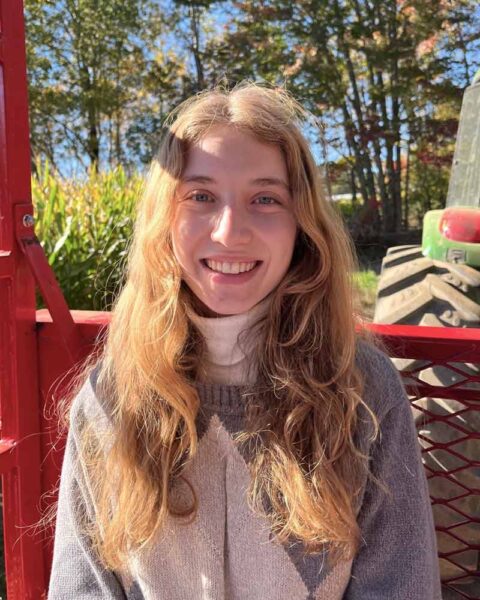 Romi Manela Bouvé‘24, “NSF Water Interviews”
Romi Manela Bouvé‘24, “NSF Water Interviews”
Mentor: Laura Senier, Bouvé, CHHS, Institute on Urban Health Research
My team and I hope to analyze data on water affordability and the problem of the rising cost of tap water in US cities. We plan to study water affordability’s health equity and racial justice implications and offer conclusions to effect real change.
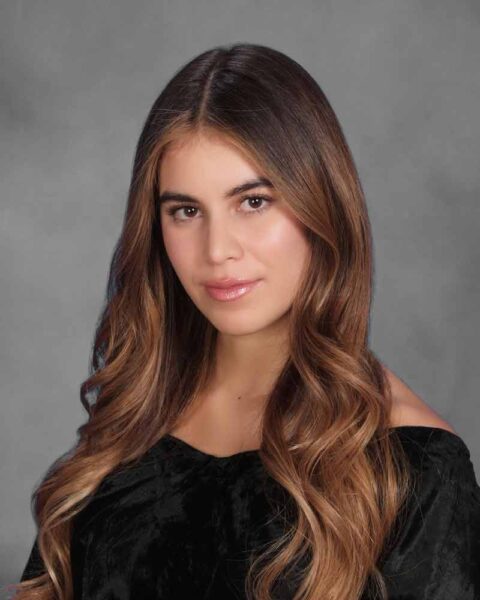 Sophia Melo Hoyos De Jesus COS’25, “Sequestration of Hydrogen Sulfide through Cysteine”
Sophia Melo Hoyos De Jesus COS’25, “Sequestration of Hydrogen Sulfide through Cysteine”
Mentor: Benjamin Woolston, COE, Chemical Engineering
In this project, we will engineer microbes that will sequester sulfide from a gut environment and enzymatically turn it into l-cysteine utilizing synthetic biology. With the molecular cloning of two genes (Cysteine Synthase and Cysteine Synthase K), they’ll be integrated into a plasmid, creating a construct that will be transformed into Escherichia-coli.
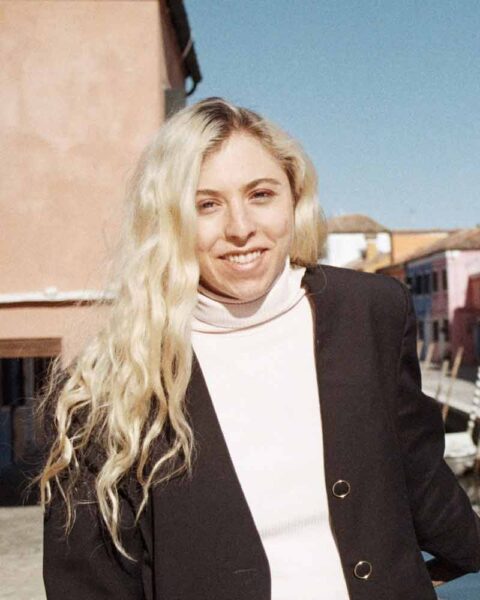 Victoria Micha Waiss COS‘23, “Wise Women”
Victoria Micha Waiss COS‘23, “Wise Women”
Mentor: Caitlin Thornbrugh, CSSH, English
Wise Women is meant to be a digital archive to preserve and share the stories of older women worldwide who have experienced and overcome adversity. In addition, it will be an accessible platform where women who have never been able to share their stories have the opportunity to do so.
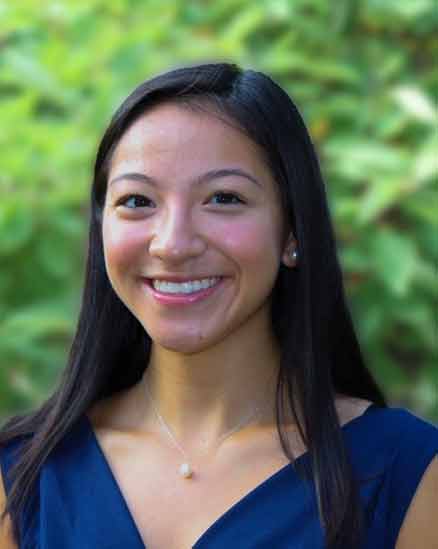 Amanda O’Brien COS’25, “Investigating Squid Pigment Granule Composition”
Amanda O’Brien COS’25, “Investigating Squid Pigment Granule Composition”
Mentor: Leila Deravi, COS, Chemistry and Chemical Biology
I plan to investigate the protein arrangement in the pigment granules found in squid skin, specifically Doryteuthis pealeii, in the hope of learning more about their function for potential material designs in the future.
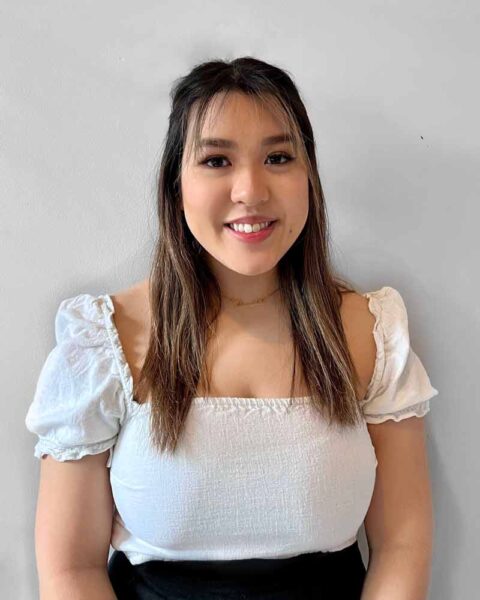 Ashley Phan COS’22, “Telehealth Services to Solid Organ Transplant Recipients in Response to COVID-19”
Ashley Phan COS’22, “Telehealth Services to Solid Organ Transplant Recipients in Response to COVID-19”
Mentor: Dami Ko, Bouvé, Nursing
This project examines the opinions and experiences of kidney and liver transplant patients across the United States with telehealth services during the COVID-19 pandemic. Through analysis of RedCap survey responses, patients’ perspectives give us insight into the accessibility and effectiveness of telehealth.
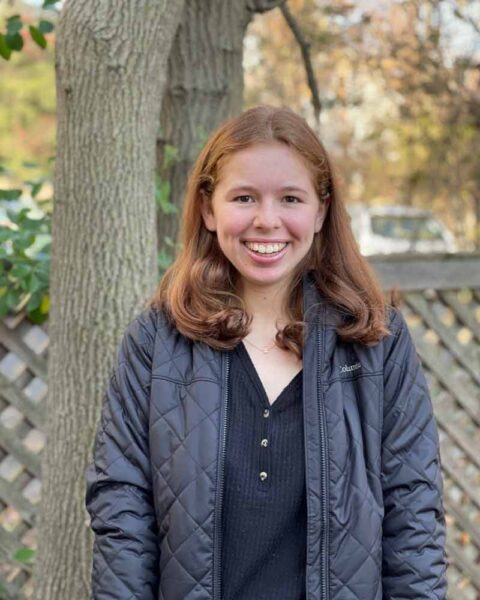 Madeline Schanen COS’25, “Effectors of Cell Envelope-Mediated Drug Resistance in A. baumannii”
Madeline Schanen COS’25, “Effectors of Cell Envelope-Mediated Drug Resistance in A. baumannii”
Mentor: Edward Geisinger, COS, Biology
This project examines the opinions and experiences of kidney and liver transplant patients across the United States with telehealth services during the COVID-19 pandemic. Through analysis of RedCap survey responses, patients’ perspectives give us insight into the accessibility and effectiveness of telehealth.
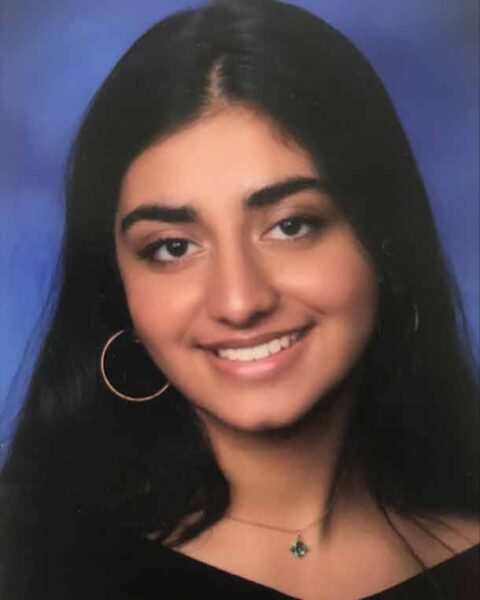 Aayushi Sharma COE’25, “Verifying Bacterial Strains on Gut-on-a-chip Models”
Aayushi Sharma COE’25, “Verifying Bacterial Strains on Gut-on-a-chip Models”
Mentor: Benjamin Woolston, COE, Chemical Engineering
I want to gain an introduction to synthetic biology by learning about primer designs, PCR, utilizing a PCR heating block, and general lab techniques. I plan to take samples from gut-on-a-chip experiments and perform colony PCR to verify that the bacterial strains are correct and investigate any contamination.
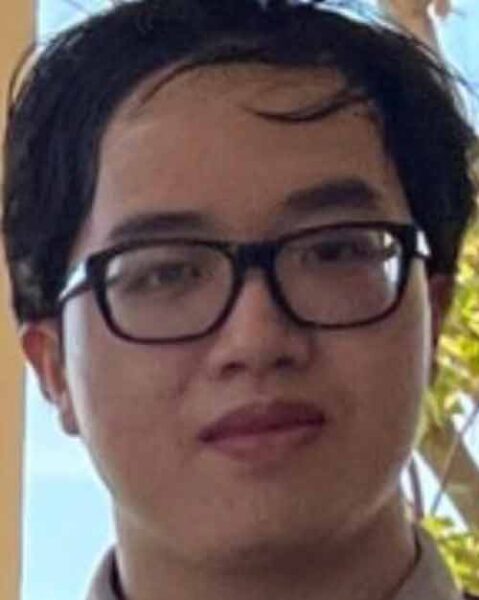 Thang Tran COE ’26, “Rail”
Thang Tran COE ’26, “Rail”
Mentor: Rifat Sipahi, COE, Mechanical and Industrial Engineering
This project aims to create a robot that brings active in-person service to Northeastern’s campus. My goal by the end of this fall is to successfully create a virtual map of the school as well as a prototype of the travel mechanism that can withstand the harsh weather of Boston.
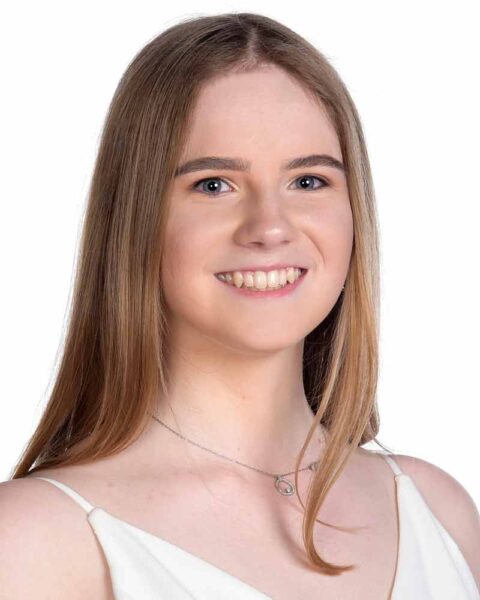 Amira Toivonen Bouvé’25, “Understanding the Relationship between Cognitive Impairment and Gamma-Wave Music Intervention”
Amira Toivonen Bouvé’25, “Understanding the Relationship between Cognitive Impairment and Gamma-Wave Music Intervention”
Mentor: Psyche Loui, CAMD, Music
As gamma-frequency stimulation has been thought to improve mild cognitive impairment (MCI), I will assist in determining if a non-invasive, music-based SynchronyGamma intervention tool (a light-up device that synchronizes musical rhythms to gamma frequencies) is a viable treatment by transcribing participants’ logbooks and analyzing MRI and EEG data.
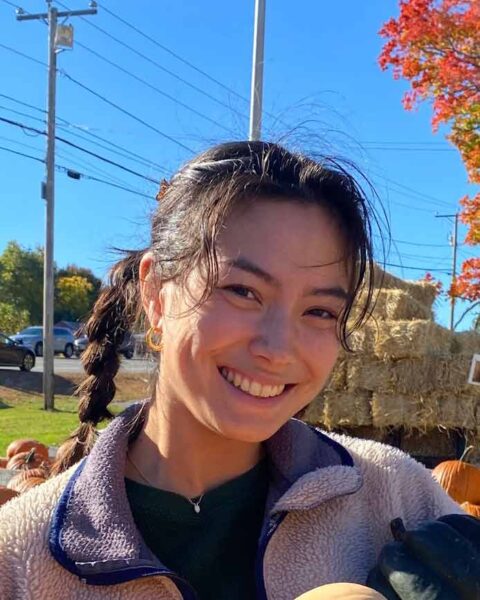 Mia Weisman COE’25, “Cysteine synthesis from bacterial hydrogen sulfide sequestration”
Mia Weisman COE’25, “Cysteine synthesis from bacterial hydrogen sulfide sequestration”
Mentor: Benjamin Woolston COE, Chemical Engineering
I hope to create a code in R, which my mentor can input his experimental data into, which will run a selected statistical test and graph the dataset with statistics added. This will significantly assist in creating beautiful graphics in a short timeframe to express his data visually.
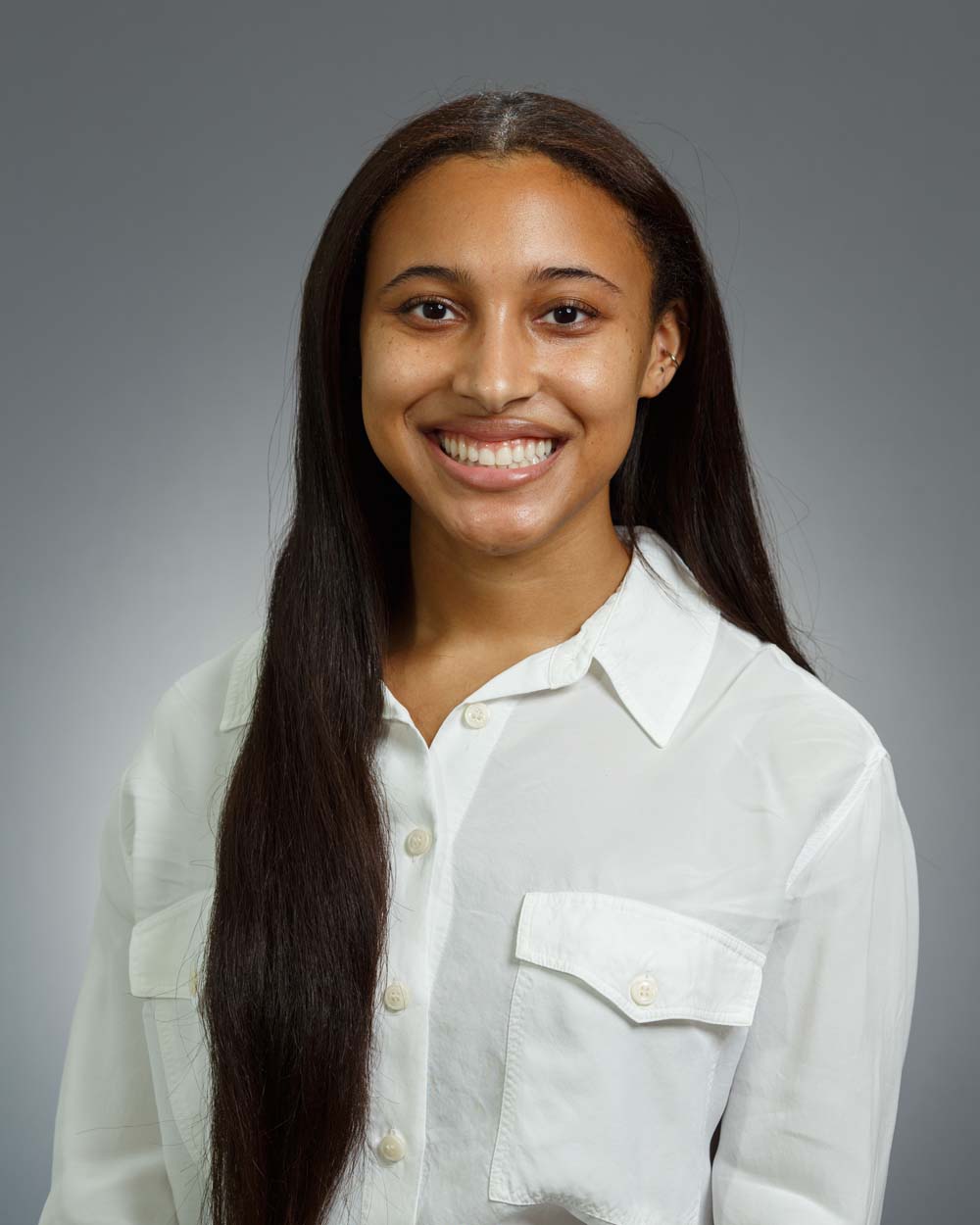 Brooke Williams CSSH’25, “Criminal for Some: Marijuana, the War on Drugs, and Its Impact on Racial Minorities”
Brooke Williams CSSH’25, “Criminal for Some: Marijuana, the War on Drugs, and Its Impact on Racial Minorities”
Mentor: Jeffrey Moyer, CSSH, Pub Policy and Urban Affairs
My research project will help to answer a seemingly simple question, how many people are incarcerated for cannabis offenses, in tandem with assisting Professor Moyer with his book about the War on Drugs. Topics like these are very important to keep in mind, especially following the waves of marijuana legalization throughout the country that these incarcerated people don’t necessarily get to benefit from. My research will result in a paper that I hope to get published, and I will contribute to Professor Moyer’s book. In order to showcase my work on campus, I plan to create a presentation.
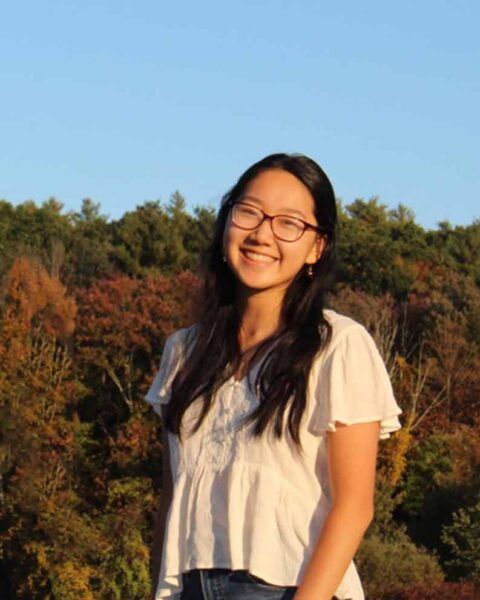 Emily Wu COS’25, “Demystifying eps Operon Regulation and Function of a Novel Kinase in Extracellular Polysaccharide”
Emily Wu COS’25, “Demystifying eps Operon Regulation and Function of a Novel Kinase in Extracellular Polysaccharide”
Mentor: Yunrong Chai, COS, Biology
Our intention is to explore the EpsB protein present in B. subtilis and investigate if the eps operon is a self-regulating system. A Phos-tag western blot will separate EpsB protein samples by size so that we can visualize the difference between the phosphorylated and non-phosphorylated versions of EpsB.
ASCENT AWARDS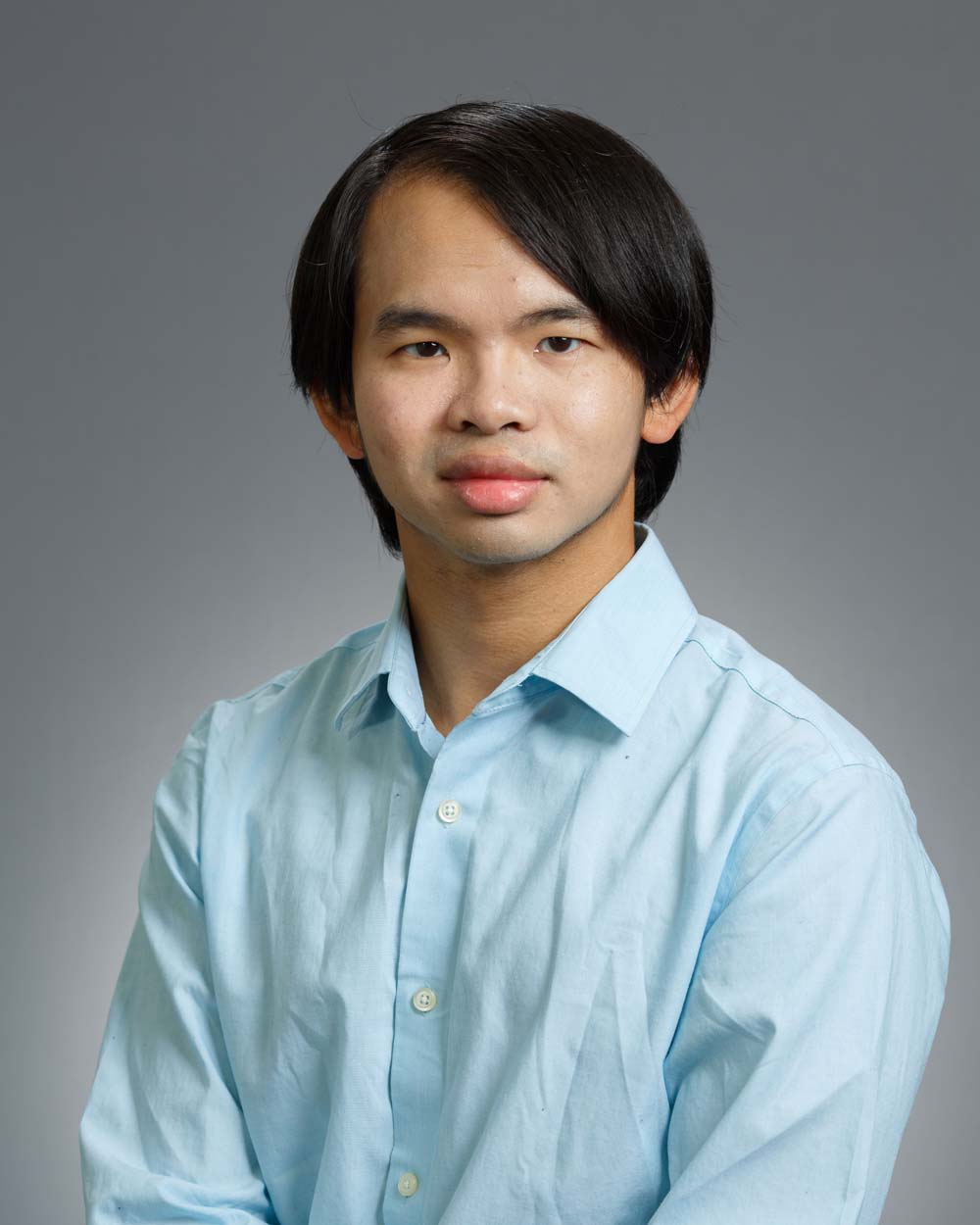 Justin Almendral COE’24, “Wearable Art”
Justin Almendral COE’24, “Wearable Art”
Mentor: Victor Zappi, CAMD, Music
Inspired by a movement that challenged the concept of art as a static object, this interdisciplinary arts project brings together faculty from music, theatre, art and design, and games to collaborate on a dynamic, kinetic wearable sculpture produced with a combination of textiles and 3D printed materials. Continuing from Spring 2022, a 3D printed skirt will be iteratively designed and assembled while working with a design and textile team to motorize and skin it. The target for this phase will be to have a working prototype that can use motors and sensor data to responsively expand and contract the skirt.
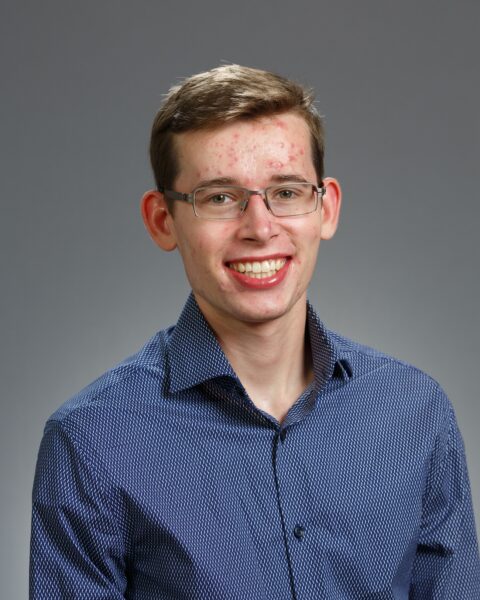 Matthew Casey Khoury’24, “Exploring Resilient Functions: Can We Do Better?”
Matthew Casey Khoury’24, “Exploring Resilient Functions: Can We Do Better?”
Mentor: Emanuele Viola, Khoury, Computer Science
Randomness is used widely in computer science, from algorithms to everyday programming tasks. One way to generate randomness is with extractors, which take a few random numbers and convert them to many nearly-random numbers. These extractors can be created using resilient functions, functions that are unlikely to change their output if portions of their input are corrupted. This project aims to determine whether the resilient functions we have now are the most resilient possible. If not, results should include functions more resilient than those that are known. The results will be shared at Northeastern RISE and in any applicable conferences/journals.
 Marvin Chong Khoury’25, “Constructing a Methodology That Applies System Thinking to the Emergent Structures of Video Games to Improve Their Development Efficiency and Player Impact”
Marvin Chong Khoury’25, “Constructing a Methodology That Applies System Thinking to the Emergent Structures of Video Games to Improve Their Development Efficiency and Player Impact”
Mentor: Brandon Sichling, CAMD, Art and Design
The purpose of my project is to construct a methodology that applies system thinking to the emergent structures of video games to improve their development efficiency and player impact. This has applications in the game industry as the methodology would allow programmers and non-programmers to collaborate more effectively, and allow designers to more confidently leave established conventions in game design, and push the boundaries of what games as a medium can offer. Outside of game development specifically, this project would encourage the development of games as tools to train critical thinking, as opposed to tools that flavors learning with dopamine.
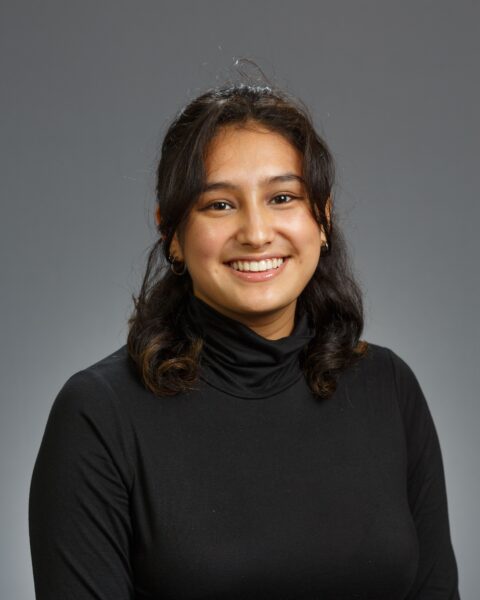 Emily Cohen COS’25,“Effects of Social Cognition on Vocabulary Development in Children with Autism Spectrum Disorder — An Eye Tracking Study”
Emily Cohen COS’25,“Effects of Social Cognition on Vocabulary Development in Children with Autism Spectrum Disorder — An Eye Tracking Study”
Mentor: Zheng-Han Qi, Bouvé, Communication Sciences & Disorders
Despite difficulty in social interaction, children with Autism Spectrum Disorder (ASD) still show a wide range of language abilities that current research cannot coherently explain. The interplay between children and their social world is critical for typical language development (Kuhl, 2007; Tomasello, 1999). By comparing the outcomes and eye movements during language learning in the presence of different social cues, this project investigates whether ASD children fixate more or less on speakers as compared to typically developing (TD) children while learning novel words from stories. I plan to present the results of this project at RISE, SOURCE, and SRCLD.
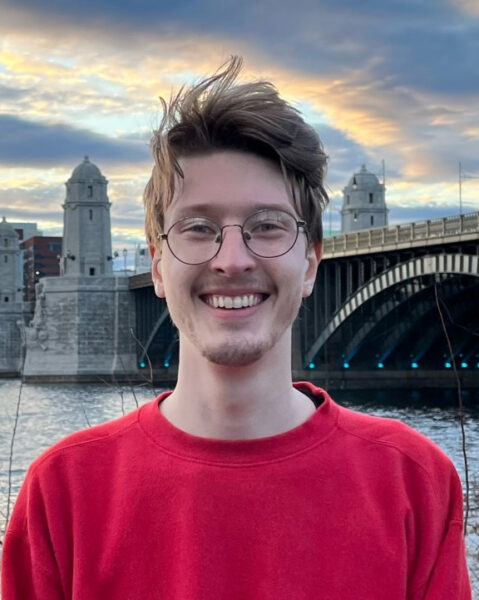 Jake Duffy Khoury’23, “Monte Carlo Simulations of Pentadecanoic Acid Monolayers”
Jake Duffy Khoury’23, “Monte Carlo Simulations of Pentadecanoic Acid Monolayers”
Mentor: Mona Minkara, COE, Bioengineering
In this project, I will be using the Monte Carlo technique to conduct computer simulations of pentadecanoic acid (PDA) monolayers. PDA is an amphiphilic fatty acid with a hydrophilic head and a hydrophobic tail, allowing it to form a monolayer on an air-water interface. At a given temperature, the monolayer is equally likely to exist in a higher and lower density state. I will be using the simulations to find the densities of these states. Better understanding the phase properties of PDA monolayers will allow for further understanding of monolayers as a whole.
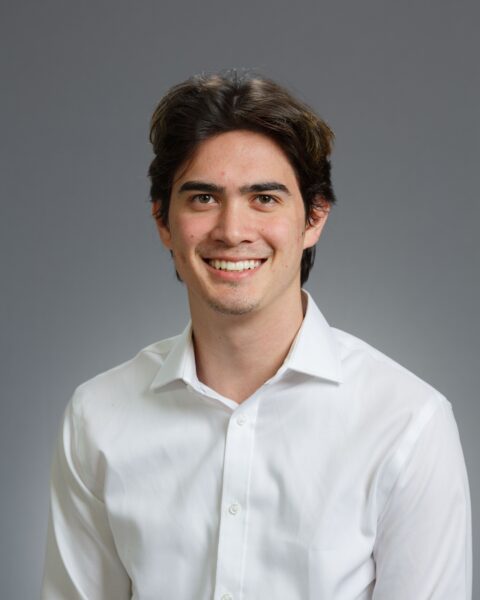 Jackson Edwards COS’24, “Exploring Cell Envelope Stress Responses of Acinetobacter baumannii through Genetic Interaction Analysis”
Jackson Edwards COS’24, “Exploring Cell Envelope Stress Responses of Acinetobacter baumannii through Genetic Interaction Analysis”
Mentor: Edward Geisinger, COS, Biology
My project explores how A. baumannii, a drug-resistant microbe responsible for hospital-acquired infections, maintains its cell envelope, the outer barrier that blocks the entry of antibiotics. Components of an important envelope stress response system have been identified, but what stressors it responds to, and how it signals, are unknown. I will identify mutations throughout the genome that cause cell death in the absence of the response system. This will provide insight into how the bacteria repair envelope damage, which could help direct the development of novel treatments that increase the sensitivity of the microbe to current antibiotics.
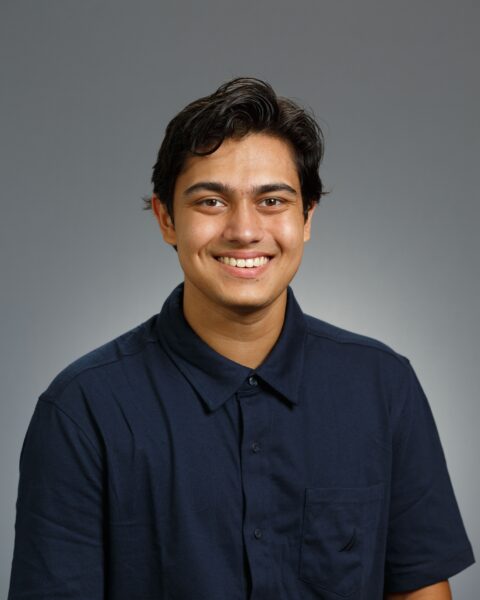 Markus Elbert COS’25, “Use of PNGase in Hydrogen Deuterium Exchange Mass Spectrometry to Study Glycoprotein Dynamics”
Markus Elbert COS’25, “Use of PNGase in Hydrogen Deuterium Exchange Mass Spectrometry to Study Glycoprotein Dynamics”
Mentor: John Engen, COS, Chemistry & Chemical Biology
Knowledge about how proteins interact can be used to discover, characterize and develop therapeutic solutions against diseases and improve patient care. The purpose of this project is to produce the protein PNGase and incorporate it into mass spectrometry, which gives useful information about the protein’s behavior. PNGase is a prominent deglycosylating protein, meaning its main purpose is to cut off sugars from a larger glycoprotein, allowing them to be studied using mass spectrometry. This specific bacterial PNGase is effective in highly acidic conditions, which makes it especially suited for use in mass spectrometry and the analysis of glycoproteins.
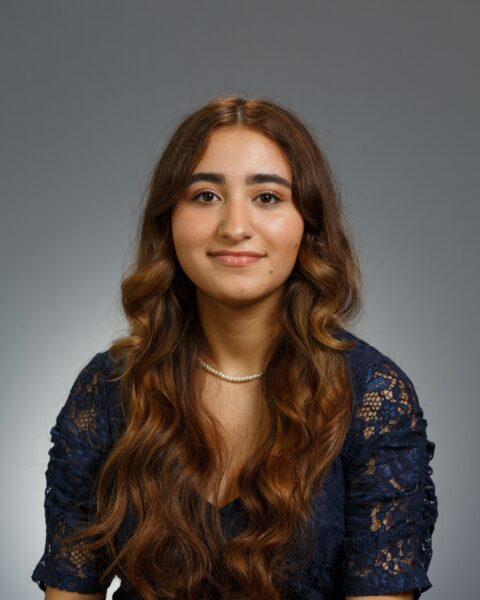 Jasmine Elsayed COS’25, “Determining the Functions of Predicted DNA Polymerases Pol A1 & Pol A2”
Jasmine Elsayed COS’25, “Determining the Functions of Predicted DNA Polymerases Pol A1 & Pol A2”
Mentor: Penny Beuning, COS, Chemistry & Chemical Biology
This project seeks to determine the function of DNA polymerase proteins PolA1 and PolA2. The importance of this research is that DNA polymerases that can copy damaged DNA can also cause mutagenesis as a “genetically programmed response.” The expected outcome from the proposed research is that we will be able to confirm the plasmids harboring the genes with the designed mutations, and through further experimentation using bacterial survival assays and thermofluor techniques, we will uncover the function of PolA1 and PolA2 and the predicted active residues. We plan to share our work by producing a scholarly publication.
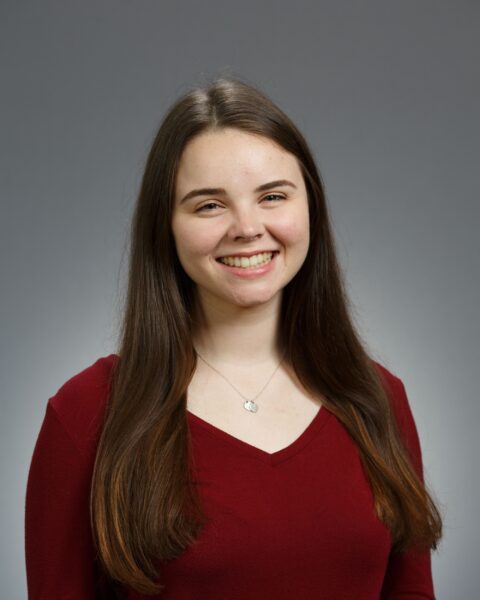 Hannah Ferguson COS’24,“Implementing Virtual Exchange and Intergenerational Service-Learning in Intermediate German Courses”
Hannah Ferguson COS’24,“Implementing Virtual Exchange and Intergenerational Service-Learning in Intermediate German Courses”
Mentor: Carolin Fuchs, CSSH, World Languages Center
This research project, which I am assisting my mentor with, centers on analyzing data collected from students that participated in a virtual Service-Learning project conducted in intermediate level German classes at Northeastern. Students were partnered with German elders and met on Zoom to converse entirely in German. My mentor and I are coding and analyzing the data (questions, needs analyses, reflections etc.,) in NVivo 12 to find evidence of intergenerational and intercultural exchange with hopes of creating more programs like these that can impact students and elder’s lives positively.
 Anika Fernandes COS’24, “Formation of the Division Septum in the Pathogen Acinetobacter baumannii”
Anika Fernandes COS’24, “Formation of the Division Septum in the Pathogen Acinetobacter baumannii”
Mentor: Edward Geisinger, COS, Biology
The hospital-acquired pathogen Acinetobacter baumannii is a resilient bacterium that is resistant to many classes of antibiotics, leading to intractable infections. Several fundamental cell processes in A. baumannii have major differences from those in well-studied model organisms, however. This project aims to improve understanding of A. baumannii cell division, particularly synthesis of the cell wall septum separating daughter cells. I will analyze the role of a protein unique to Acinetobacter in this process, and will use CRISPRi, mutant bacteria, and fluorescence microscopy to observe and quantify how the septum is formed during division. My results will be presented at RISE.
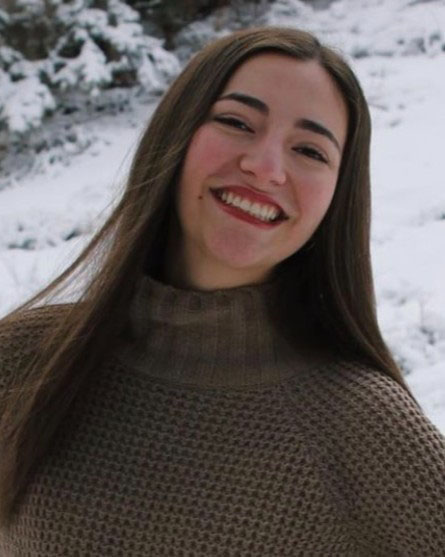 Paloma Figueroa COE’26, “The Role of Mannose Binding Lectin in Response to Tuberculosis”
Paloma Figueroa COE’26, “The Role of Mannose Binding Lectin in Response to Tuberculosis”
Mentor: Mona Minkara, COE, Bioengineering
This project seeks to utilize Molecular Dynamics to analyze the relationship between Mannose Binding Lectin in response to tuberculosis entering the lungs. The study will allow for a clearer understanding of how effective MBL is at combating Tuberculosis. I will seek to identify what percentage of tuberculosis MBL is able to combat on an atomic scale. I expect the outcome to be at least over 50% of tuberculosis combatted. There has not been a computational study done on the relationship between MBL and tuberculosis so I look forward to doing so with the guidance of Assistant Professor Mona Minkara.
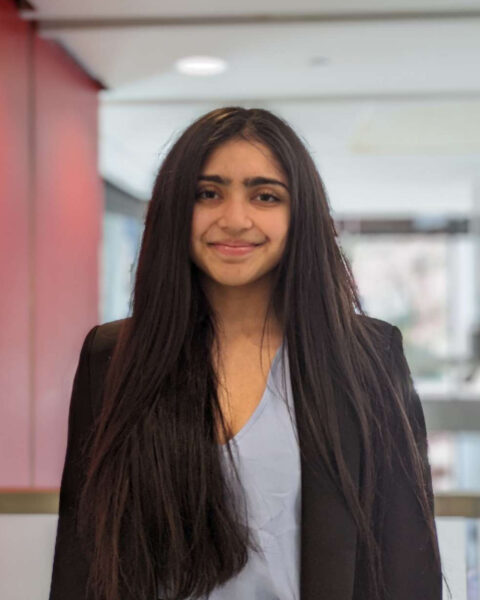 Khushi Gandhi COS’25, “Development of Pet Imaging Ligands for mGluR7”
Khushi Gandhi COS’25, “Development of Pet Imaging Ligands for mGluR7”
Mentor: Mary Ondrechen, COS, Chemistry & Chemical Biology
Metabotropic glutamate receptor 7 (mGluR7) has a high expression in several brain regions critical for central nervous system (CNS) functioning. Inhibitors that target mGluR7 serve as potential therapeutic interventions against several neurological disorders. The goal of this project is to use computational tools to identify small molecules that have the potential to modulate mGluR7. This work has the potential to develop candidate compounds with high affinity and excellent selectivity over other mGluR subtypes and thus could be used as PET imaging ligands for mGluR7 and prospective drug candidates for the treatment of CNS disorders, like Parkinson s or schizophrenia.
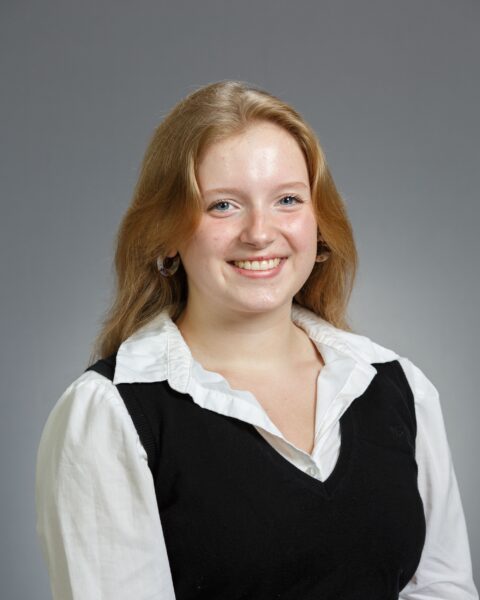 Kelsey Hanle COE’24, “Investigation of Column Liquid Chromatography for Collagen Purification from Crispr-Based Genetically Enhanced Cells”
Kelsey Hanle COE’24, “Investigation of Column Liquid Chromatography for Collagen Purification from Crispr-Based Genetically Enhanced Cells”
Mentor: Jeffery Ruberti, COE, Bioengineering
Collagen, due to its abundance and mechanical strength, is advantageous for various therapeutic applications. My research will optimize a purification protocol for substantial amounts of collagen harvested from cells genetically altered with CRISPR to promote collagen production. I will implement liquid chromatography to attain a higher yield and purity, assessed from hydroxyproline assay and gel electrophoresis, than previous methods applied in the Ruberti lab. My work will enhance the development of purified collagen therapeutics of prime structural orientation to effectively aid human bodily functions. I intend to present results at RISE, SB3C, and the Advanced Cell and Tissue Biomanufacturing Conferences.
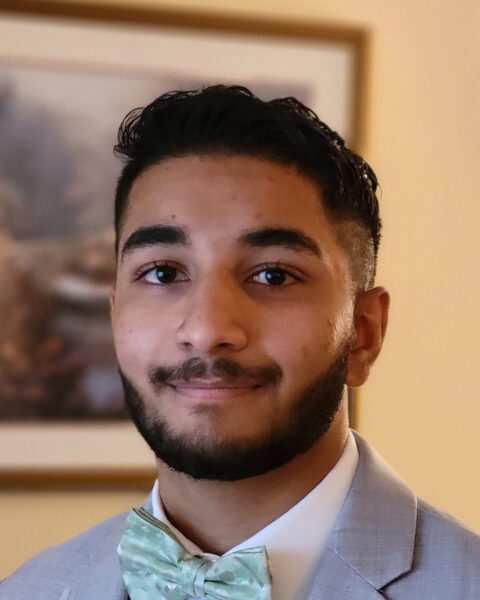 Hamza Iqbal COE’26, “Pneumatic Actuator Motion Characterization”
Hamza Iqbal COE’26, “Pneumatic Actuator Motion Characterization”
Mentor: Kris Dorsey, COE, Electrical and Comp Engineering
The goal of this project is to develop a system that can be used to track and quantify the motion of soft pneumatic actuators. This will be accomplished using computer vision and machine learning. This is a significant goal because the movement of soft actuators can be difficult to characterize by conventional methods and using computer vision can allow us to accurately analyze their movements for use in robotics. The anticipated outcome of the project is to produce a model that can accurately predict the movements of soft actuators.
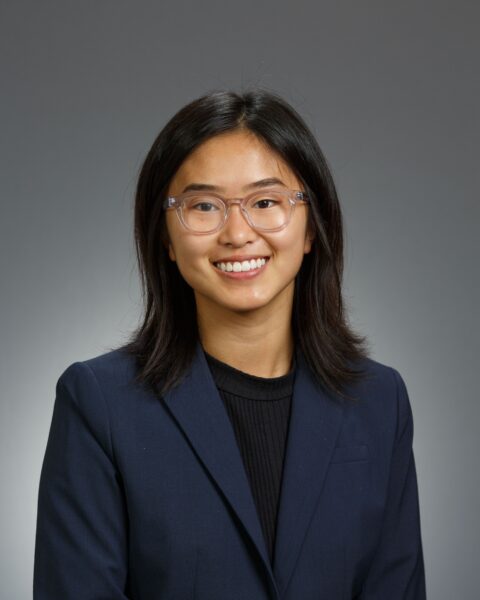 Sage Kumar COS’23, “Investigating Eph-Ephrin Pathways in Axolotl Limb Regeneration”
Sage Kumar COS’23, “Investigating Eph-Ephrin Pathways in Axolotl Limb Regeneration”
Mentor: James Monaghan, COS, Biology
Axolotls are a valuable tool for researching regenerative biology, however, the underlying mechanisms of their regenerative capabilities are largely unknown. This project aims to explore the relationship between cell adhesion and migration and the proximodistal axis during axolotl limb regeneration. Through treatment of regenerating limb tissues with fluorescently-tagged genetic probes, researchers will be able to visualize and quantify the spatial and temporal genetic activity of Ephs and ephrins, factors known to be central to cell adhesion and migration during development, tumorigensis, and regeneration. The results gained will be shared at RISE, and through the applicant’s Research Capstone presentation.
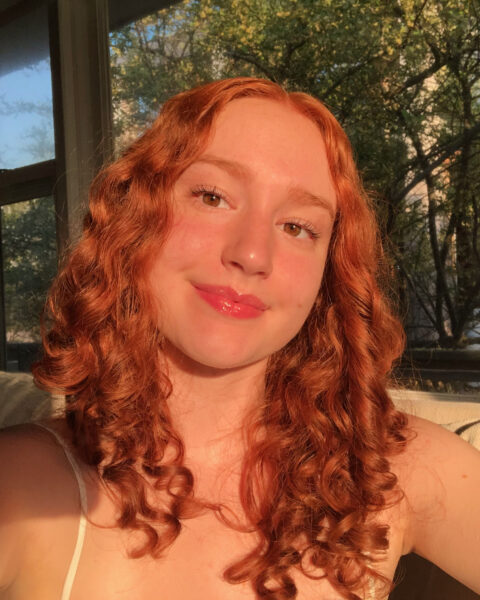 Tess Latham COS’25, “Investigating the Professional and Linguistic Identity of French Professors”
Tess Latham COS’25, “Investigating the Professional and Linguistic Identity of French Professors”
Mentor: Stacey Katz Bourns, CSSH, World Languages Center
This projects aims to discover how one changes as they become more expert at French and how it affects all facets of their life. This research will give insight into what mastery of a foreign language really means, which can help guide teaching of students and training of professors. In order to gain meaningful results, a survey and interviews will be conducted with French professors from across the country. A large connection between expertise of French as well as positive interactions with French culture and personal identity is expected.
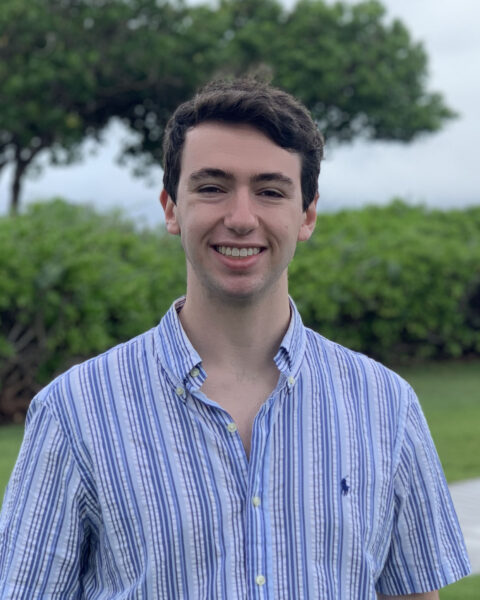 Max Leblang COE’26, “VR Pose Analysis”
Max Leblang COE’26, “VR Pose Analysis”
Mentor: Sarah Ostadabbas, COE, Electrical and Comp Engineering
For this project, I will use Meta (Oculus) and VIVE Virtual Reality headsets to analyze synthetically generated 3D poses of animals, adult humans, and infants. The VR headsets will allow me to look at the generated poses in an up-close and interactive way to verify the validity of the poses and adjust any irregularities to improve data quality. I will create a GitHub manual detailing how to setup this and perform this analysis approach, and present the impact my analysis had on model accuracy and a demonstration of my approach at RISE and for the graduate students in the ACLab.
 Hayden Libershal CSSH’25, “Agricultural Pass Program”
Hayden Libershal CSSH’25, “Agricultural Pass Program”
Mentor: Daniel Aldrich, CSSH, Political Science
This research will explore Agricultural Pass programs in California that allow workers to enter wildfire evacuation zones to conduct essential agricultural work. Our research will be the first to provide a comprehensive overview of the Agricultural Pass programs across numerous counties in California, the variance between different counties, and years.
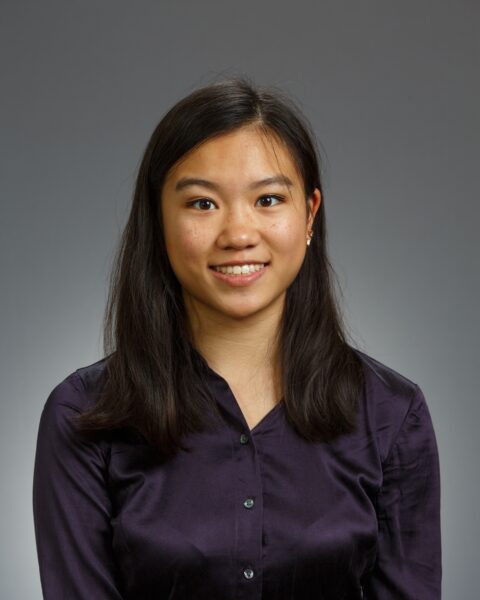 Kara Lui COE’26, “Investigating Fluorescence as an Effective Method of Life Detection Onboard a Rover”
Kara Lui COE’26, “Investigating Fluorescence as an Effective Method of Life Detection Onboard a Rover”
Mentor: Allison Dennis, COE, Chemical Engineering
The 1976 Viking lander was the only rover sent to Mars with an in-situ life detection payload, but the results returned to Earth were inconclusive as to whether there is life on Mars. This project will test the effectiveness of luminescent molecules in detecting signs of life on Mars. An ATP-sensing bioluminescent reagent and DNA fluorescent stains will be tested against a soil-water slurry imitating Martian soil collected and mixed with water onboard a rover. The goal is to have a working procedure for implementing fluorescent techniques on a rover, suggesting a feasible life detection system for future Mars missions.
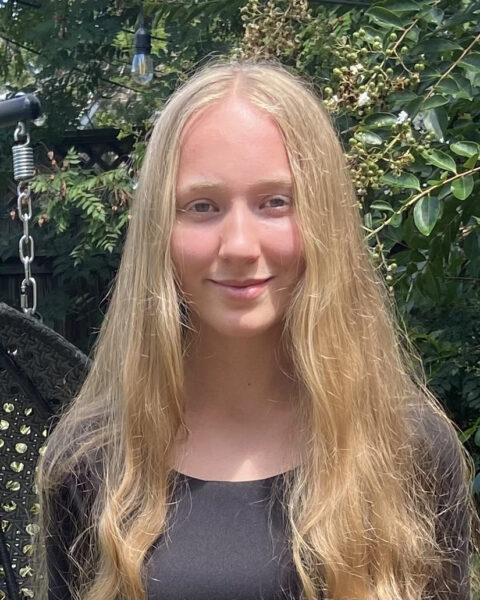 Anna Lunger COE’26, “Hydrogen Sulfide Sequestration via Glutathione Synthesis”
Anna Lunger COE’26, “Hydrogen Sulfide Sequestration via Glutathione Synthesis”
Mentor: Benjamin Woolston, COE, Chemical Engineering
Hydrogen sulfide is a molecule that plays complex roles in gut health with potential implications in inflammatory bowel disease. However, sulfide levels are difficult to measure, which makes studying its effects challenging. This project will develop a tool to help elucidate sulfide’s potentially concentration-dependent effects on gut health. We aim to engineer bacteria that can regulate sulfide by converting it into glutathione, a sulfur-containing substance. We will test the bacteria by dosing varying quantities of sulfide. This will show whether conversion is possible and to what extent. This work will be presented at RISE and potentially future on-campus events.
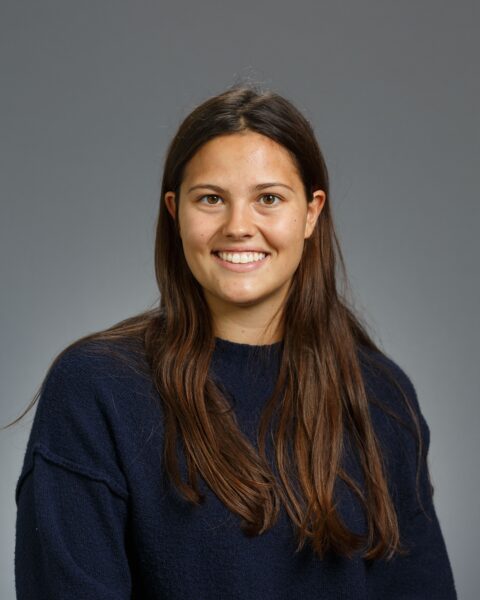 Erin Murphy COS’25, “Defining the Unique Mechanisms Enabling Cell Division and Intrinsic Fluoroquinolone Resistance in the Antibiotic-Resistant Pathogen Acinetobacter baumannii”
Erin Murphy COS’25, “Defining the Unique Mechanisms Enabling Cell Division and Intrinsic Fluoroquinolone Resistance in the Antibiotic-Resistant Pathogen Acinetobacter baumannii”
Mentor: Edward Geisinger, COS, Biology
The highly drug-resistant bacterium Acinetobacter baumannii causes infections that are prevalent in ICUs and increasingly difficult to combat with current treatments. There is a large gap in knowledge of the mechanisms these bacteria use for the crucial process of cell division. My research will use genetic techniques to investigate how an essential but enigmatic protein, AdvA, controls A. baumannii division by interacting with other pathways in the cell. I anticipate uncovering aspects of the function of AdvA and related proteins, which can be targeted by future therapies to eliminate infections with the bacteria.
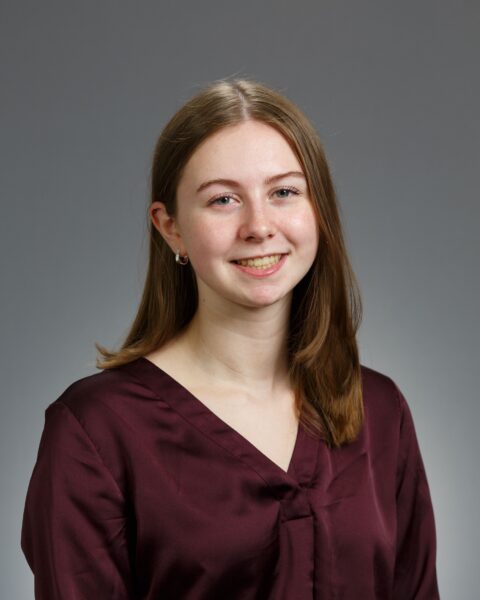
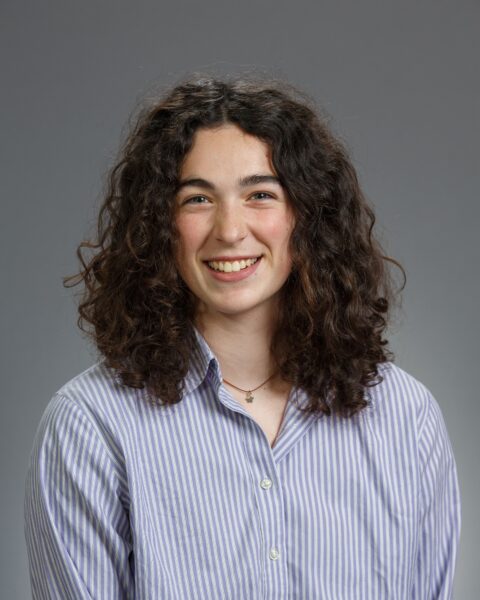 Katherine O’Brien Bouvé’24, Julia Papasodoro Bouvé’24, “Retention in Care of People Living with HIV in Nigeria: A Systematic Review”
Katherine O’Brien Bouvé’24, Julia Papasodoro Bouvé’24, “Retention in Care of People Living with HIV in Nigeria: A Systematic Review”
Mentor: John Olawepo, Bouvé, Health Sciences
This project analyzes retention in care of antiretroviral treatment (ART) in Nigeria. Over 1.9 million people are living with HIV (PLHIV) in Nigeria, and ART treatment is crucial to combating this. However, retention in care on ART is relatively unknown and inconsistent across the literature in Nigeria, thus this project systematically analyzes existing literature on this topic to determine retention in care. We followed PRISMA guidelines and collected 900+ abstracts to review, and narrowed it down to 60 to include in our manuscript and meta-analysis. Through the meta-analysis, we will be able to determine a retention in care statistic.
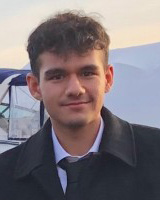
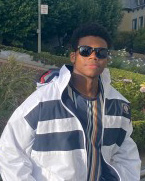 Alexander Pervizi COE’26, Anthony Ngumah COE’25, “Exploring the Waveform for 6G: The Development of Ultrabroadband Networking”
Alexander Pervizi COE’26, Anthony Ngumah COE’25, “Exploring the Waveform for 6G: The Development of Ultrabroadband Networking”
Mentor: Josep Jornet, COE, Electrical and Computer Engineering
All innovation must start somewhere. For 6G, this “somewhere” is at the heart of one of the few terahertz (THz) labs in the country: Northeastern’s Ultrabroadband Networking Laboratory. Our research is focused on exploring the optimal waveform for 6th generation mobile networking (6G), that would allow society to modulate much faster terahertz frequency signals for information transfer as opposed to gigahertz used for 5G. Waveforms, being the shape of signals graphed over time, dictate the efficiency of signal transmission over different media. Research into new waveforms to support 6G is now applicable, especially with demands for faster networking in mind.
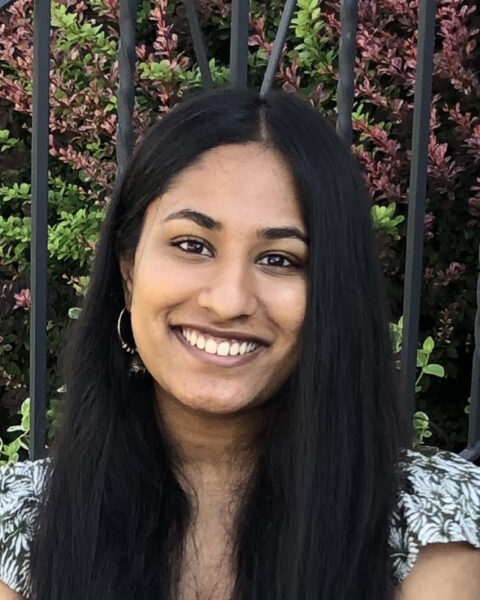 Kaitlyn Ramesh COE’26, “Inferring Gene Expression Dynamics from Low Temporal Resolution Single-Cell Gene Expression Data”
Kaitlyn Ramesh COE’26, “Inferring Gene Expression Dynamics from Low Temporal Resolution Single-Cell Gene Expression Data”
Mentor: Mingyang Lu, COE, Bioengineering
A key biology question is to understand the kinetics of cellular processes. A class of computational methods, named pseudotime algorithms, has been developed to infer time dynamics from a snapshot of gene expression in single cells. However, existing methods often cannot identify the complex trajectories of cellular transitions or reflect their timescale. Hence, I am developing a novel algorithm that integrates single-cell gene expression data and low-resolution real time information to accurately infer these transcriptional dynamics. This algorithm will contribute to a quantitative understanding of the cellular dynamics underlying disease and development, and it will be shared in a publication.
 Prakriti Setlur COS’24, “Transcriptional and Functional Profiling of Protollin-Activated Monocytes”
Prakriti Setlur COS’24, “Transcriptional and Functional Profiling of Protollin-Activated Monocytes”
Mentor: Desislava Raytcheva, COS, Biology
Dr. Weiner’s research focuses on developing agents to treat neurodegenerative diseases such as Multiple Sclerosis, Amyotrophic Lateral Sclerosis, and Alzheimer’s disease (AD). These studies show that nasal administration of Protollin, a proteasome-based adjuvant, promotes amyloid beta clearance in AD transgenic mice. This project investigates the transcriptional changes human and mouse monocytes undergo upon stimulation with Protollin, OMPs and LPS. We will also assess the phagocytic ability of human and mouse monocytes against Ab 1-42 to shed light on the Protollin-induced changes that take place in monocytes and will provide a better understanding of their beneficial role on Alzheimer’s disease.
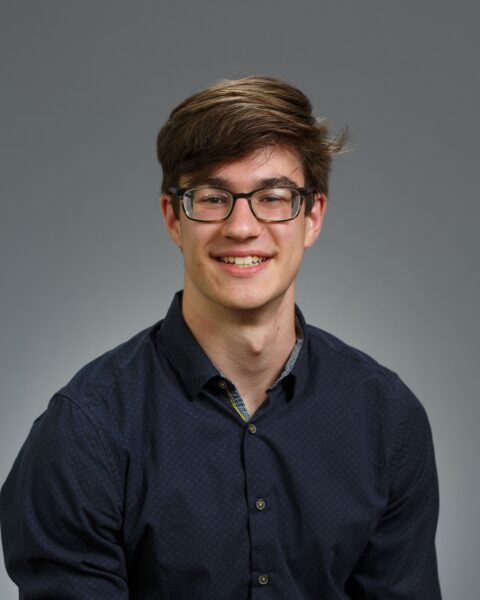 Nolan Smithwick COE’26, “External Attachment Effect on Mobility”
Nolan Smithwick COE’26, “External Attachment Effect on Mobility”
Mentor: Alireza Ramezani, COE, Electrical and Comp Engineering
COBRA, the Crater Observing Bio-inspired Rolling Articulator, is a modular snake-inspired robot built for exploration on the moon where traditional wheeled-rovers cannot travel. It can both slither and tumble down steep slopes. My project, External Attachment Effect on Tumbling Mobility, aims to create attachments that can increase its stability while tumbling. I will rapidly prototype different solutions using 3D Printing and perform a series of tests using COBRA on different elevations of slope and on different surfaces. I intend to share my findings at RISE with comprehensive quantitative data on the aspects that best maximize tumbling and slithering mobility performances.
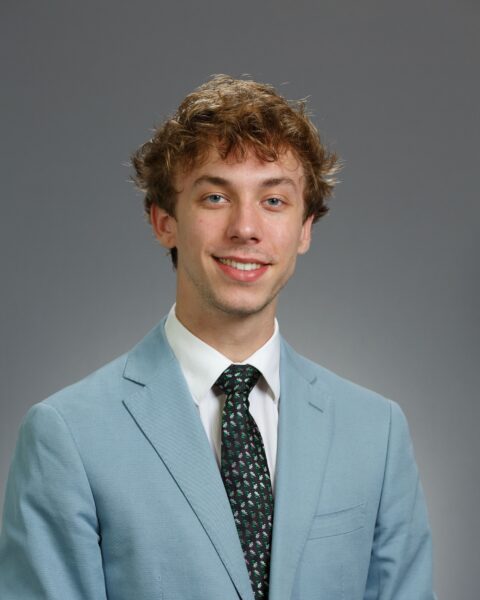 Zach Stolberg COS’24, “Characterizing the Development of Neurospheres to Decrease the Frequency of Neonatal Mice Sacrifice”
Zach Stolberg COS’24, “Characterizing the Development of Neurospheres to Decrease the Frequency of Neonatal Mice Sacrifice”
Mentor: Abby Koppes, COE, Chemical Engineering
Many researchers must rely on sacrificial mice to provide their samples for ENS research. I personally find this to be a humane gray area within scientific research, so I plan on optimizing the proliferation of neurospheres in order to reduce the amount of neonatal mice sacrifices. I will isolate and proliferate these neurospheres over the course of 4-5 weeks, and subsequently characterize their development using fluorescence microscopy. This process will be repeated again with slightly different neuron media, and ideally, the neurospheres will proliferate with a higher percentage of neurons usable in ENS research.
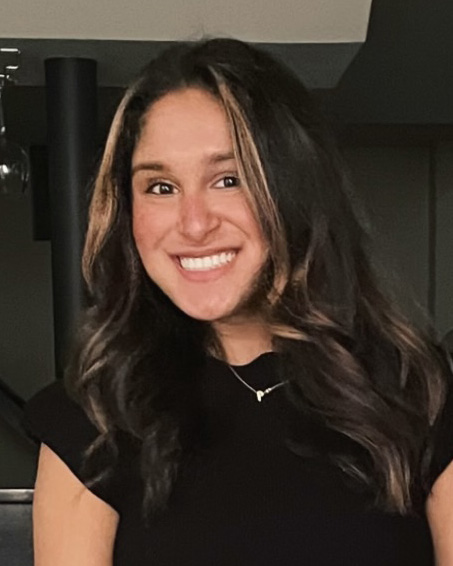
Prachi Thakur COS’25, “Investigating the Role of Melatonin in Pubertal Timing after Early Life Adversity”
Mentor: Heather Brenhouse, COS, Psychology
Excess exposure to melatonin can delay pubertal maturation in humans and animals. Pubertal hormones contribute to brain development which is why atypical pubertal timing can have negative effects. This project’s goal is to explore melatonin’s effects on puberty in rats that experience early life adversity. Because chronic early life adversity tends to accelerate the onset of puberty, it is expected that melatonin levels will be lower than normal. The expression and production of melatonin will be measured through qPCR experiments and amino assays. The results of this research will be presented at RISE and may be published in a manuscript.
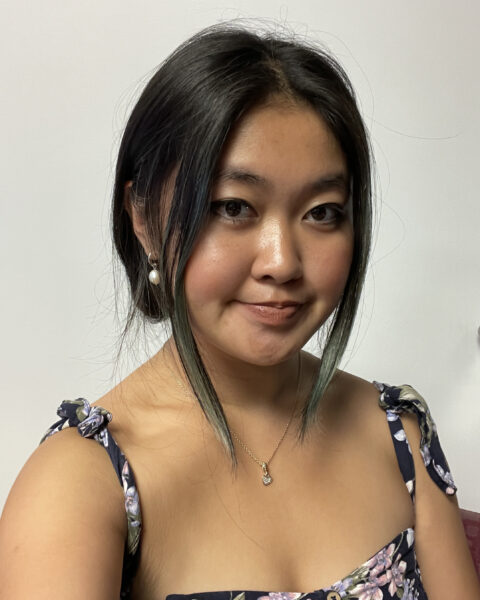 Jane Wang COS’24, “Optimization of Total Anthocyanin Extract from Red Cabbage”
Jane Wang COS’24, “Optimization of Total Anthocyanin Extract from Red Cabbage”
Mentor: Leila Deravi, COS, Chemistry & Chemical Biology
Anthocyanins are water-soluble pigments responsible for the red, purple, and blue coloration shown in produce. The chemical structure of anthocyanin provides for a range of potential applications from edible, non-toxic pigments for use in food products to health supplements that can offer antioxidant and anti-carcinogenic benefits. Current protocols focused on extracting anthocyanins from natural sources are vague in understanding how to optimize and stabilize the final anthocyanin yield. In order to take full advantage of anthocyanin s biological properties, this research project focuses on advancing current techniques available for anthocyanin extraction in order to optimize total anthocyanin content and stability.
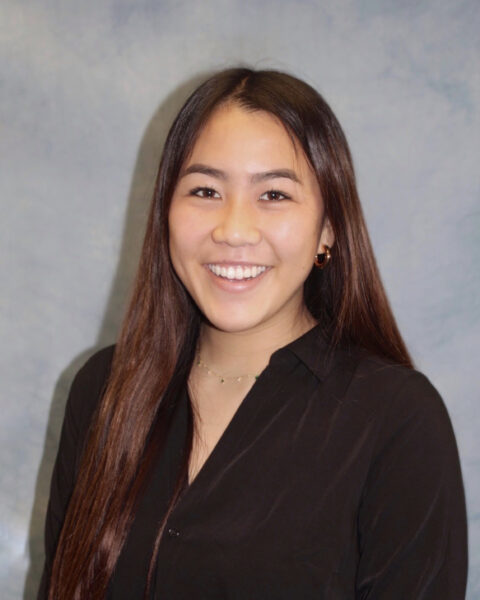 Morgan Wong Bouvé’24, “Un-Masking the Origins of Maternal Morbidity/Mortality (UMOMMI)”
Morgan Wong Bouvé’24, “Un-Masking the Origins of Maternal Morbidity/Mortality (UMOMMI)”
Mentor: Alisa Lincoln, Bouvé, Health Sciences
In the United States, women of color face disproportionately poorer maternal outcomes, as reflected in their higher rates of severe maternal mortality/morbidity (SMM) compared to White women. The magnitude of these disparities may be affected by a lack of consensus regarding the measurement of SMM internationally. The UMOMMI project will compare the SMM measurement frameworks of the US and Canada by applying them to the same cohort of US delivery hospitalizations. Using National Inpatient Sample hospital data, the project will analyze racial and ethnic disparities, as well as temporal trends, in SMM rates from 2012-2019.
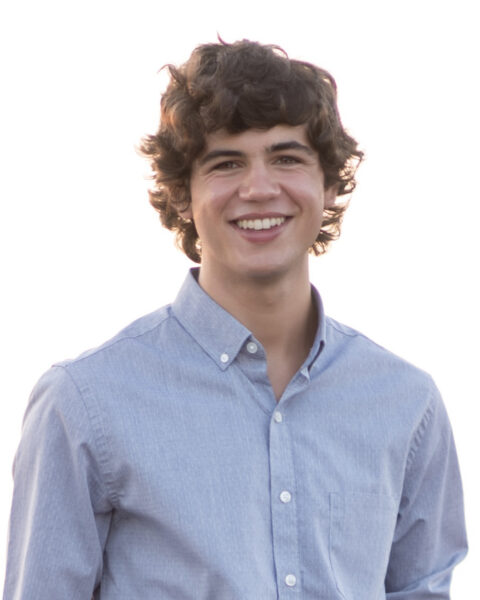 Anthony Zappala COE’26, “Conductive versus Non-conductive Hydrogels for Innervated Organs-On-Chips”
Anthony Zappala COE’26, “Conductive versus Non-conductive Hydrogels for Innervated Organs-On-Chips”
Mentor: Ryan Koppes, COE, Chemical Engineering
When neurons are cultured in organs-on-chips, non-conductive hydrogels are typically used as a 3D matrix. My project aims to study the effectiveness of using conductive hydrogels to allow for better recordings of neuron activity. By using a dual-hydrogel chip, the action potential firing rates, degrees of synchronization between neurons, and action potential amplitudes will be compared between the conductive and non-conductive hydrogels to determine which type is more effective. This work will be presented through a poster at RISE.
SUMMIT AWARDS
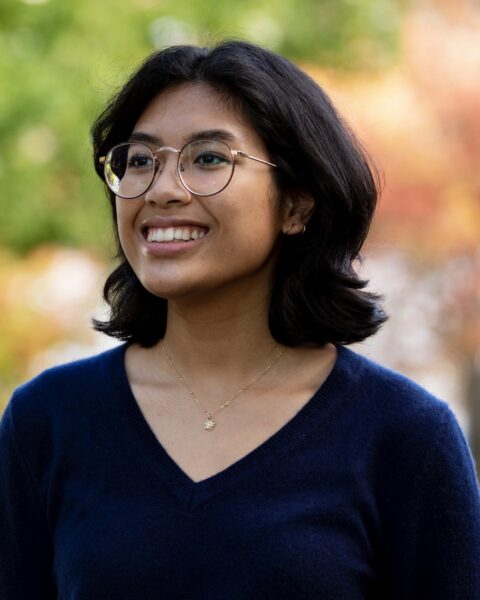 Gillian Audia COE’23, “Microneedle-like Particles for High Bioavailability Oral Peptide Delivery”
Gillian Audia COE’23, “Microneedle-like Particles for High Bioavailability Oral Peptide Delivery”
Mentor: Vasiliki Lykourinou, COS, Chemistry & Chemical Biology
Our project goal is to engineer a technology platform for high bioavailability oral protein drug delivery with high reliability to help reduce patient burden and potentially increase patient compliance. I plan to develop and characterize microneedle-like particles for oral protein delivery that penetrate the epithelial barrier in the gastrointestinal tract to enable high bioavailability and achieve consistent drug delivery profiles. I hope to have several top candidate microneedle-like particles for further testing in preclinical animal models and to share the results of our project at the 2022 Materials Research Society Fall Meeting.
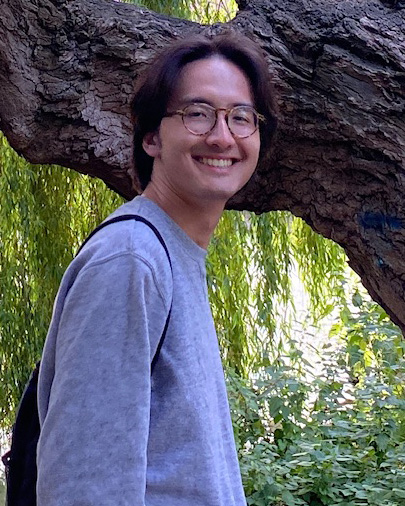
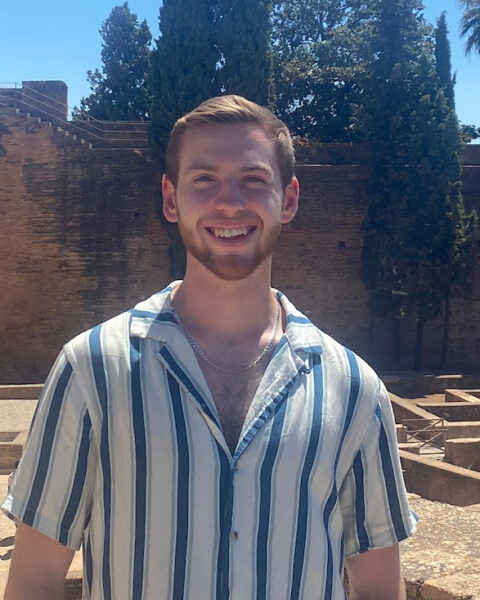 Brant Barbera-Hwang COE’24, Benjamin Lanava COE’2024, “PFAS Removal via Phytoremediation”
Brant Barbera-Hwang COE’24, Benjamin Lanava COE’2024, “PFAS Removal via Phytoremediation”
Mentor: Annalisa Onnis-Hayden, COE, Civil & Environmental Engineer
The purpose of our project is to see if phytoremediation, or the use of plants to remove contaminants from water, is a viable option for the removal of PFAS, a newly discovered contaminant of concern. The need for clean water is universal meaning that the outcomes of this research will be applicable to everyone! By testing local water sources and then filtering them through a local plant species native to New England that we believe will be effective at removing PFAS concentrations in water, we expect to see significant reductions in our results that we hope to publish.
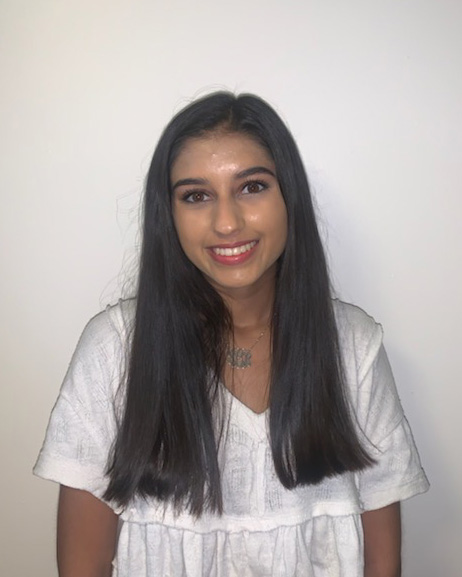 Shreya Bhalla COS’23, “Effects of Emotion Naming on Emotion Regulation in Younger and Older Adults: A Replication and Extension Study”
Shreya Bhalla COS’23, “Effects of Emotion Naming on Emotion Regulation in Younger and Older Adults: A Replication and Extension Study”
Mentor: Derek Isaacowitz, COS, Psychology
People in distress are often encouraged to say how they feel by identifying their emotions. It is thought that identifying emotions will help them to cope. Emotion naming is an integral and central aspect of many different types of therapy. Despite this, it has been shown that emotion naming tends to impede emotion regulation. This project will determine the effect of emotion naming, if any, on emotion regulation between younger and older populations. Participants will be shown a series of images and asked to name/ not name their emotions as well as regulate/ not regulate their emotions.
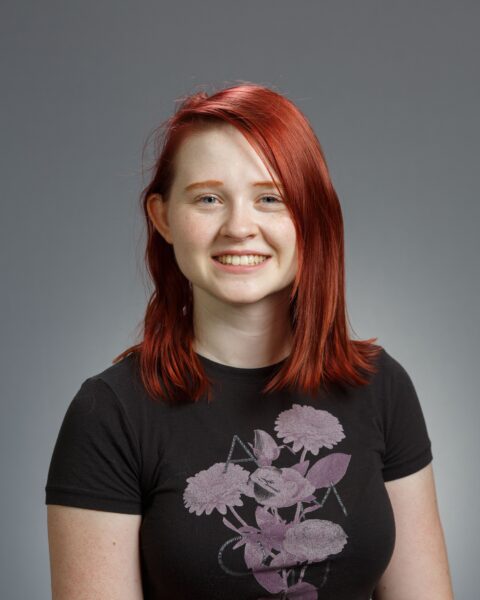 Ashley Brown COS’24, “Exploring Oxygen-Generating Cryogels’ Potential as Delivery System in Prostate Cancer Vaccine”
Ashley Brown COS’24, “Exploring Oxygen-Generating Cryogels’ Potential as Delivery System in Prostate Cancer Vaccine”
Mentor: Sidi Bencherif, COE, Chemical Engineering
In my project, I am investigating oxygen-producing cryogels compatibility as a delivery system for a prostate cancer vaccine. In prostate cancer, there is often not enough oxygen present in the tumor microenvironment, a condition known as hypoxia. Hypoxia is part of how tumors are able to evade the immune system and other cancer treatments. If a drug delivery system reversed this hypoxia, it could reinvigorate the immune system and amplify the existing benefits of a cancer vaccine. This could drastically improve cancer patient outcomes. I plan to share my project results at RISE and an appropriate external venue.
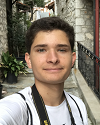 David DePice COS’24, “Advancements to HDX-MS Experimentation through New Chromatographic Instrumentation”
David DePice COS’24, “Advancements to HDX-MS Experimentation through New Chromatographic Instrumentation”
Mentor: John Engen, COS, Chemistry & Chemical Biology
New chromatographic instruments have been developed with higher pressure limits. How much could such advancements in instrumentation improve the current level of experimentation possible across the field of professionals using hydrogen deuterium exchange mass spectrometry (HDX-MS) as a primary method to study proteins? Hypothetically, this increase in pressure limit will allow faster flow rates, shorter gradient lengths, less time experimenting, and more accurate data. The object of this project is to test the modern instrumentation to elucidate these relationships quantitatively. These findings will be shared to the Journal of Chromatography A and presented at a national mass spectrometry conference (ASMS).
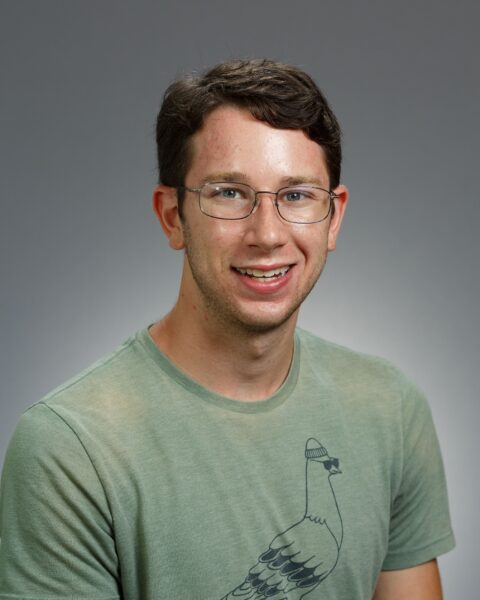 Jacob Egelberg COS’24, “Flagella-Mediated Antibiotic Persistence”
Jacob Egelberg COS’24, “Flagella-Mediated Antibiotic Persistence”
Mentor: Kim Lewis, COS, Biology
The World Health Organization predicts that by 2050, antibiotic resistant bacteria will kill more than 10 million people every year. My project explores how to stop this threat at its source by investigating a precursor to antibiotic resistance, antibiotic persistence. Persistent bacteria evade antibiotic treatments and rapidly evolve resistance mutations, causing chronic infections that outlast antibiotics and resistant ones that regrow following treatment. I hope to stop these persistent bugs by studying and exploiting the relationship between persistence and the bacterial flagella, a molecular machine that cells use for movement and that is linked with persistence.
 Vivian Hua COS’22, “Cell Envelope-Modulating Stressors That Enhance the Antimicrobial Susceptibility of Acinetobacter baumannii”
Vivian Hua COS’22, “Cell Envelope-Modulating Stressors That Enhance the Antimicrobial Susceptibility of Acinetobacter baumannii”
Mentor: Edward Geisinger, COS, Biology
Acinetobacter baumannii is a frequent cause of antibiotic-resistant pneumonia and sepsis in ICUs. Synthesis and regulation of a cell envelope is critical to the ability of these bacteria to cause disease and resist antibiotic treatment. The two-component system, BfmRS, exerts global control over A. baumannii envelope biogenesis. As the pathogen has become resistant to almost all antibiotics, we must develop improved treatment methods. I will investigate how a form of stress related to protein misfolding in the cell envelope, disulfide inhibition, triggers activation of BfmRS and how this process could enhance the potency of existing treatments such as phage therapy.
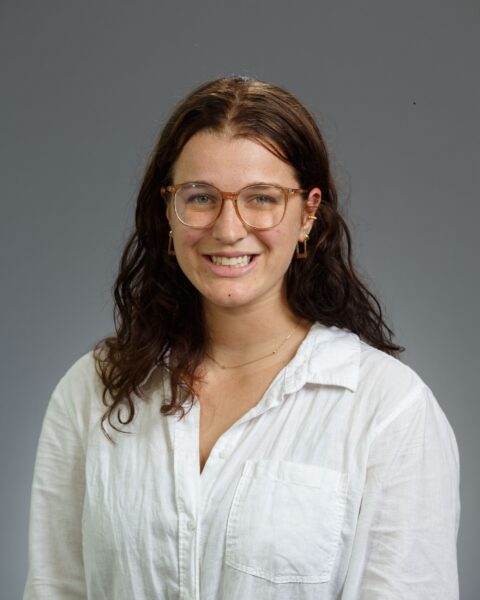 Genevieve Hulshof COS’23, “Sex Differences in Circuit Mechanisms Mediating Pain Processing and Fear Responses”
Genevieve Hulshof COS’23, “Sex Differences in Circuit Mechanisms Mediating Pain Processing and Fear Responses”
Mentor: Rebecca Shansky, COS, Psychology
This project aims to study the role of neural activity within anterior cingulate cortex to ventral periaqueductal gray projecting neurons in facilitating sex differences in fear responses and pain sensitivity. I will achieve this by recording calcium activity within a target neural population of rats undergoing fear conditioning. The goal of this project is to elucidate a potential neural circuit that may contribute to the neurobiological factors driving sex differences in the disease susceptibility of PTSD. I plan to share these results through drafting a publication to submit to a peer-reviewed journal, submitting to academic conferences, and presenting at RISE.
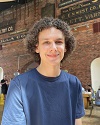 Sam Koblensky COE’24, “Optical Measurement of Micron-Scale Oil-On-Water Films for Characterization of Droplet Impact Dynamics”
Sam Koblensky COE’24, “Optical Measurement of Micron-Scale Oil-On-Water Films for Characterization of Droplet Impact Dynamics”
Mentor: Xiaoyu Tang, COE, Mech & Industrial Engineering
Spraying droplets of oil dispersant on marine oil spills is found to be an effective method for cleaning up. Generating a map of different collision outcomes depending on the droplet velocity and oil thickness can help optimize the operating conditions. However, it is challenging to measure the thickness of thin oil films accurately. This project’s goal is to develop an optical method for this thickness measurement and to generate an accurate regime map for water-oil-water collision outcomes. This work will be compiled into a journal publication and presented at RISE and APS March Meeting in 2023.
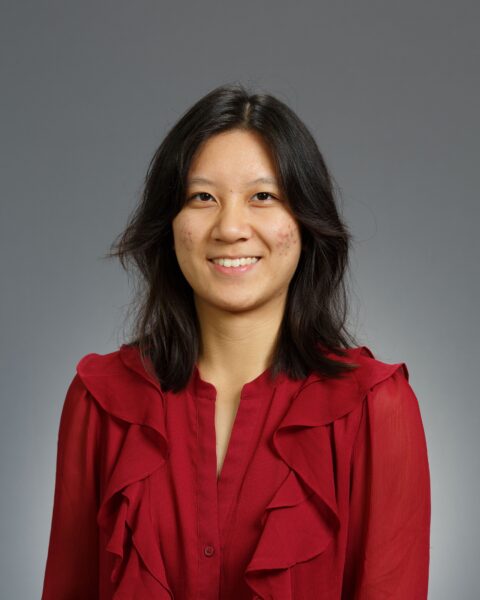 Angela Liu COS’25, “Targeting Macrophage Polarization to Improve Cancer Immunotherapies”
Angela Liu COS’25, “Targeting Macrophage Polarization to Improve Cancer Immunotherapies”
Mentor: Stephen Hatfield, Bouvé, Pharmaceutical Science
Immunotherapy is a powerful up-and-coming treatment for cancer, but currently remains limited against an immunosuppressive tumor. One factor contributing to this immunosuppression is the presence of tumor-protecting M2 macrophages in the tumor microenvironment. The solution is to repolarize these “bad” M2 macrophages into “good” antitumor M1 macrophages. This project is a novel study using oxygenation therapy to target macrophage polarization. I examine how hypoxia, a feature of immunosuppressive tumors, affects macrophage polarization, and whether reversing hypoxia through oxygenation would reverse M2 polarization and promote the antitumor M1 phenotype.
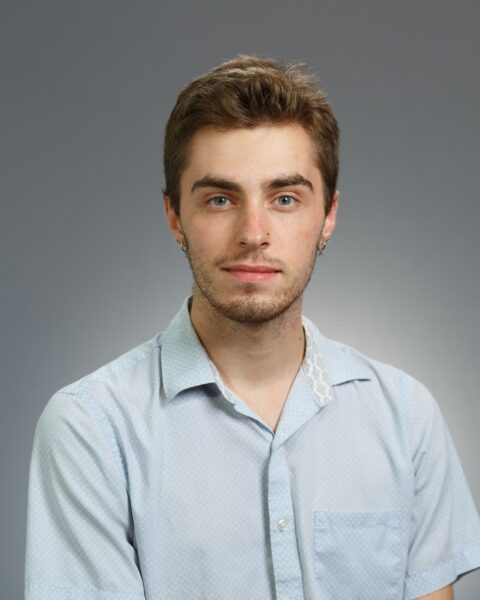 Devin Lloyd COS’23, “Building a Mechanistic Picture of Biofilm Formation in Acinetobacter baumannii”
Devin Lloyd COS’23, “Building a Mechanistic Picture of Biofilm Formation in Acinetobacter baumannii”
Mentor: Veronica Godoy-Carter, COS, Biology
Acinetobacter baumannii , a key pathogen in hospital-acquired infections, is resistant to treatment in part because of its ability to make protective multicellular communities called biofilms . We have shown that the Lon and SurA1 proteins function in biofilm formation, but it is unclear how. This project intends to uncover Lon and SurA1 s roles in biofilm formation using standard and novel approaches such as the CRISPy-ChIP assay being developed in the lab. The result of this project will help us develop new approaches to prevent A. baumannii infections. We aim to present the data at RISE and the ASBMB s national conference.
 Yueting Lu COS’24, “Amyotrophic Lateral Sclerosis: A Pyroptotic Approach”
Yueting Lu COS’24, “Amyotrophic Lateral Sclerosis: A Pyroptotic Approach”
Mentor: Jamie Bunce, COS, Biology
Amyotrophic Lateral Sclerosis (ALS) is a fatal neurodegenerative disease driven by progressive death of motor neurons in the central nervous system. Neuroinflammation is recognized as a critical component in the progression of neurodegeneration. The Gasdermin D (GSDMD) protein contributes to pyroptosis – an inflammatory form of cell death. GSDMD expression may contribute to neuroinflammation in the context of neurodegeneration – this project aims to improve our understanding of the impacts GSDMD mediated pyroptosis in ALS progression using SDO1G93A mice models. Ultimately, we aim for these findings to contribute to the creation of more effective therapeutic targets for ALS.
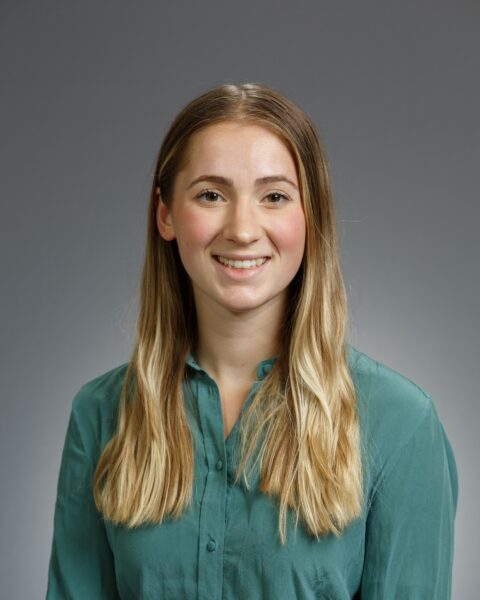 Anna Meglan COS’23, “Kinetic Target-Guided Synthesis of PfAtg8 Inhibitors”
Anna Meglan COS’23, “Kinetic Target-Guided Synthesis of PfAtg8 Inhibitors”
Mentor: Roman Manetsch, COS, Chemistry & Chemical Biology
The rise in antimicrobial resistance against current malaria treatments necessitates the identification of alternative malaria targets and new antimalarial drugs. Plasmodium falciparum autophagy related protein 8 ( Pf Atg8) has been identified as one such target, though there are few known inhibitors due to druggability challenges. Through two distinct screening campaigns against Pf Atg8, cheminformatics-driven down selection and kinetic target-guided synthesis (kTGS), Pf Atg8 inhibitors will be identified. Hits will originate from (1) a virtual library; or (2) kTGS, wherein a target protein assembles its own inhibitor. Numerous multi-component reactions and scaffolds will be explored, time permitting, and hit potency will be tested.
 Lee Milburn COE’22, “Dynamic Legged System Lab’s VINUM Project”
Lee Milburn COE’22, “Dynamic Legged System Lab’s VINUM Project”
Mentor: Taskin Padir, COE, Electrical and Comp Engineering
My project is researching an image segmentation based navigation approach for quadruped robots in de-structured vineyard environments. Field-work for Vineyards is in short supply, causing their deterioration. This project helps increase the Technological Readiness Level of automated vineyard field-work. I will be training a Mask R-CNN to do image segmentation, sending detections through a Kalman Filter to identify the grapevines, then calling the quadruped controller combined with visual servoing to reach the grapevines. I anticipate combining my navigation with other researcher’s work to create a robot which can navigate vineyards to prune grapevines, and then publishing to external robotics journals.
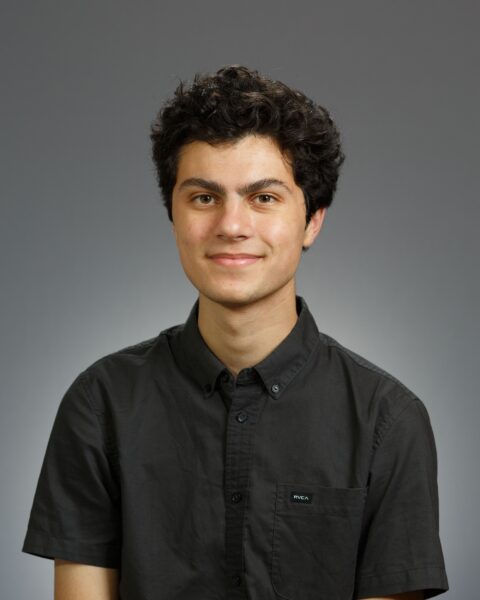 Dillon Nishigaya COS’25, “Bioengineered Mitochondria as Potential Effectors of Cancer Cell Death .”
Dillon Nishigaya COS’25, “Bioengineered Mitochondria as Potential Effectors of Cancer Cell Death .”
Mentor: Dori Woods, COS, Biology
Late-stage ovarian cancer has a high chance of recurrence due to chemotherapy-resistant OvCa cells that cause both therapeutic failure and death. Currently, there are no strategies to combat chemotherapy-resistant cells. My research explores how bioengineered mitochondria have the potential to solve this problem. Mitochondria play a critical role in ovarian cancer because they carry out extremely important biological processes that allow cancer cells to resist drugs. My research seeks to address how mitochondrial behavior is altered within chemotherapy-resistant OvCa cells, and whether or not bioengineered mitochondria can be potential effectors of cancer cell death by eliminating chemo-resistance.
 Liam O’Malley COS’24, “Investigating Commercially-Available Aspergillus niger Prolyl Endoprotease for Use in Hydrogen-Deuterium Exchange Mass Spectrometry”
Liam O’Malley COS’24, “Investigating Commercially-Available Aspergillus niger Prolyl Endoprotease for Use in Hydrogen-Deuterium Exchange Mass Spectrometry”
Mentor: John Engen, COS, Chemistry & Chemical Biology
Hydrogen-deuterium exchange mass spectrometry (HDXMS) is a protein analysis technique which utilizes proteases to improve the resolution of analysis. These proteases must function in acid (pH 2.5) and at low temperature (0C). This project involves developing a method to use the enzyme Aspergillus niger prolyl endoprotease (ANPEP) in HDXMS. ANPEP provided from a commercial source will be isolated and purified using various types of column chromatography before being immobilized on a column and inserted into the HDXMS workflow. The successful characterization and utilization of this enzyme will provide a novel source and method for use within HDXMS experimentation.
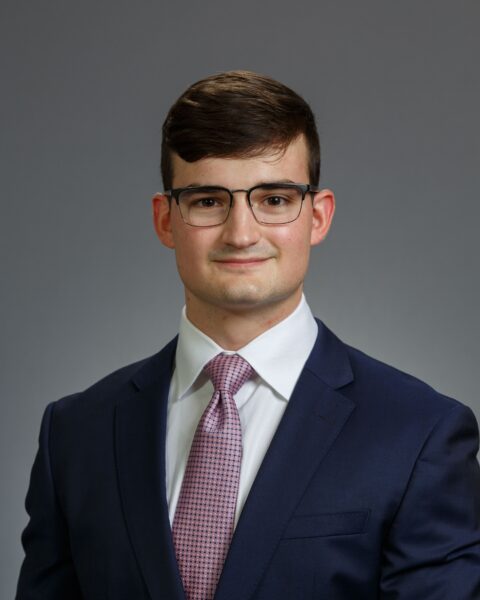 Jason Olszewski COE’24, “Mechanical Force Dependence of Organized Collagenous Structure Development”
Jason Olszewski COE’24, “Mechanical Force Dependence of Organized Collagenous Structure Development”
Mentor: Jeffrey Ruberti, COE, Bioengineering
My research goal is to understand the mechanism of tissue formation by studying the effect of mechanical forces on collagen assembly. I will fabricate disorganized, non-fluorescent and fluorescent collagen sheets. Using a bioreactor, I will cyclically load only the non-fluorescent sheet while it is attached to the fluorescent collagen substrate. Through microscopy, I will determine whether cyclic forces induce migration of fluorescent collagen to the loaded sheet, and organization of collagen fibrils within the loaded sheet. T his will enhance our understanding of tissue formation, establishing a foundation for tendon engineering therapeutics. I will present results at RISE, SB3C, and NCUR.
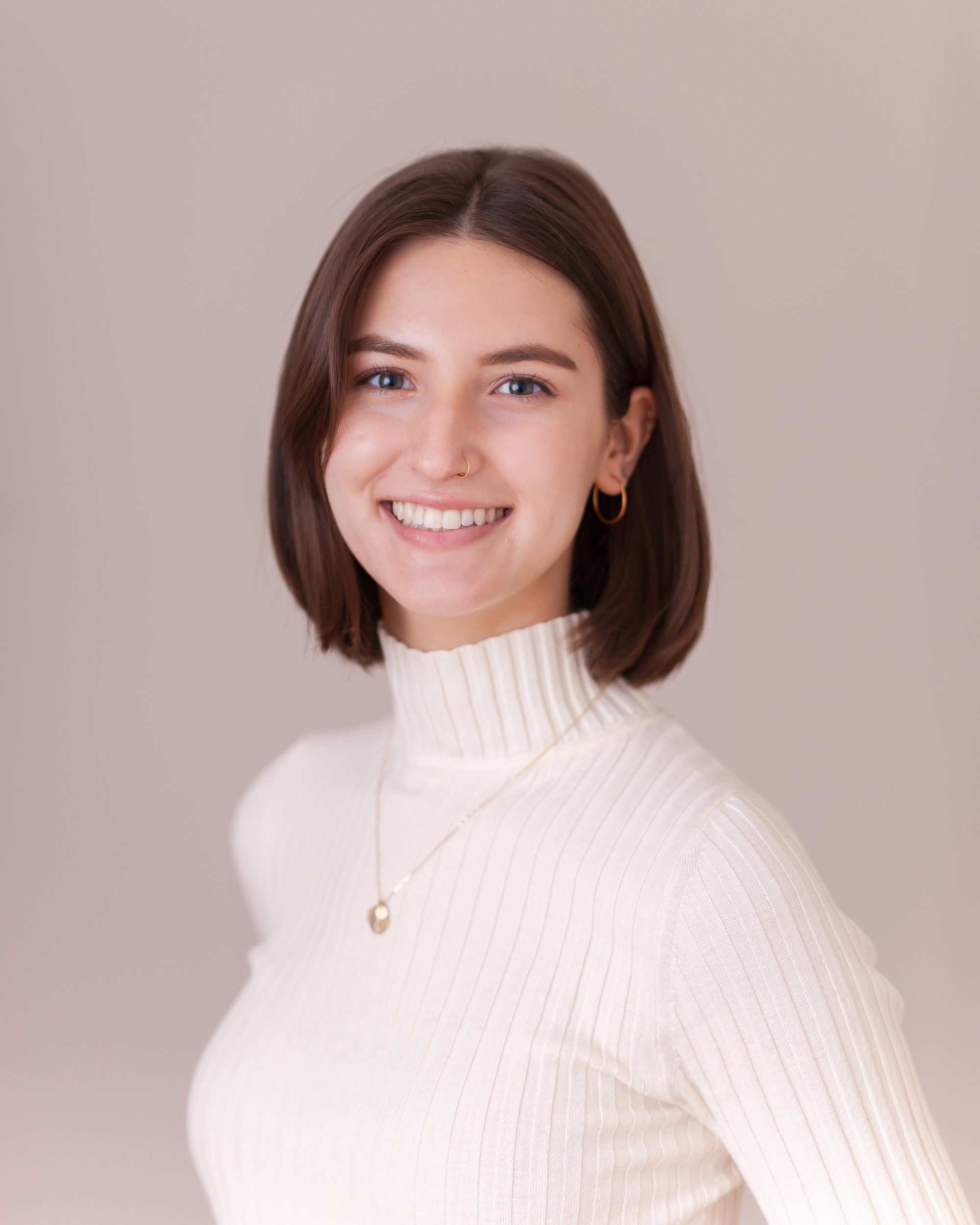 Nicole Page COS’23, “The Effect of Music Listening on Neuroinflammation Biomarkers in Mild Cognitive Impairment Patients”
Nicole Page COS’23, “The Effect of Music Listening on Neuroinflammation Biomarkers in Mild Cognitive Impairment Patients”
Mentor: Psyche Loui, CAMD, Music
Dementia-related disorders, such as Mild Cognitive Impairment (MCI), affect millions of aging adults each year. Music-based interventions represent a promising and non-invasive therapeutic option. However, more research is needed into their efficacy. This project aims to evaluate the biochemical effects of daily music listening over the course of 8 weeks in older adults with and without MCI through the analysis of markers of biological processes such as stress-induced inflammation in the blood. We hypothesize that music listening will downregulate key inflammatory pathways such as NF-kB signaling. The results of this project will be shared through presentations/publications.
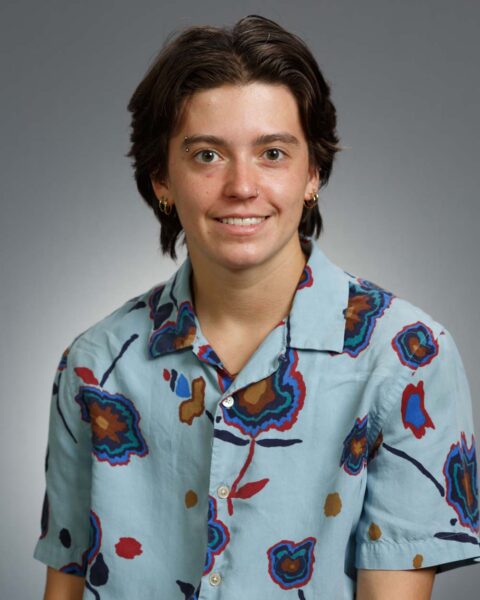 Grayson Peel CSSH’23, “How Place Shapes Queer Identity: A Southern Appalachian Case Study”
Grayson Peel CSSH’23, “How Place Shapes Queer Identity: A Southern Appalachian Case Study”
Mentor: Gordana Rabrenovic, CSSH, Sociology and Anthropology
This project will use ethnographic methods to investigate how features of a specific place such as demographics, cultural scripts, and ecology influence the identities of LGBTQ+ individuals, groups, and communities, via a case study of a small town in Southern Appalachia. I anticipate finding a unique culture surrounding queer identity that shapes and is shaped by place-based characteristics. Through exploring the ways in which queer people negotiate and express their identities in this specific local context, I aim to challenge the notion of a static, homogenous American queer identity, and to undermine harmful stereotypes about the Southern Appalachian region.
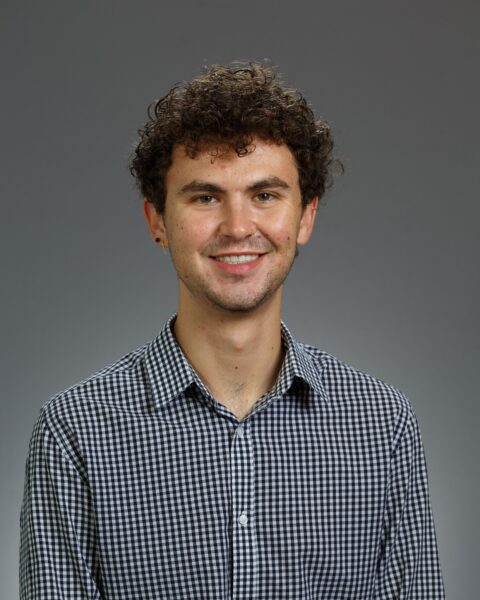 Jordan Rhyner Bouvé’23, “Enriching Communities: A Partnership Between Artists and Community Health Centers”
Jordan Rhyner Bouvé’23, “Enriching Communities: A Partnership Between Artists and Community Health Centers”
Mentor: Rebekah Moore, CAMD, Music
This project, which is part of a larger longitudinal study investigating the interconnections of art, race, and health equity, seeks to explore the role artists may play in strengthening communities through partnerships with community health centers in the Boston neighborhoods of Roxbury, Dorchester, South End, Jamaica Plain, and Fenway. O ur research team will complete informational focus group interviews that bring together artists and community health center representatives. The findings of the longitudinal study will be presented at the 2022 American Public Health Association conference in November and at the RISE Expo in 2023.
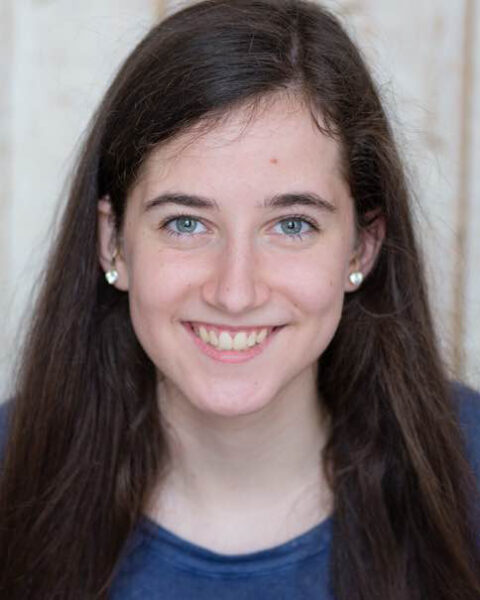 Erin Rosenfeld CSSH’23, “Accessibility on Broadway”
Erin Rosenfeld CSSH’23, “Accessibility on Broadway”
Mentor: Rachel Berman-Kobylarz, CSSH, American Sign Language
Theatre must be accessible to everyone, which the Americans with Disabilities Act attempts to ensure. However, ADA policies are not extensive enough to protect disability rights, and existing policies are rarely followed or enforced. Broadway utilizes loopholes: marking balcony seats as wheelchair accessible in theatres without elevators, not discounting accessible seats despite the legal requirement, and more. I am creating seating charts for all 41 Broadway theatres and researching shows’ accommodations. I’ll work with Columbia University’s Law Department; our findings will be taken to the New York State Supreme Court in an effort to update the ADA and improve accessibility.
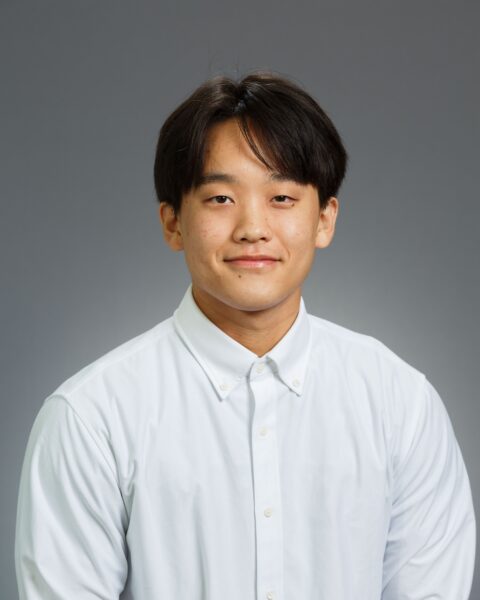 Brian Shim COS’23, “Single-Cell Characterization of Gamma-Delta T-Cells during Colorectal Tumorigenesis”
Brian Shim COS’23, “Single-Cell Characterization of Gamma-Delta T-Cells during Colorectal Tumorigenesis”
Mentor: Anne van de Ven, COS, Physics
Gamma-delta T-cells are a unique subtype of immune-cell that are thought to play a role in cancer immunity. Current research suggests that these cells, which can reside within tissue, act in active surveillance and defense against cancerous cells. However, this functionality is poorly understood, and a greater resolution view of the interactions between gamma-delta T-cells and developing tumors is highly needed to better characterize their role in cancer immunity. My project will utilize single-cell RNA sequencing data to characterize phenotypic evolution of gamma-delta T-cells during colorectal tumorigenesis. I hope to share my work at a conference and in publication.
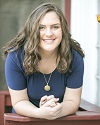 Jacqueline Smith COS’24, “Synthesis of Nicotinamide Anti-Malarial Inhibitors”
Jacqueline Smith COS’24, “Synthesis of Nicotinamide Anti-Malarial Inhibitors”
Mentor: Roman Manetsch, COS, Chemistry & Chemical Biology
Current treatments to malaria, the world’s most detrimental parasitic disease, are becoming less effective as antimicrobial resistance grows. It is vital in the fight against malaria to develop new drugs against Plasmodium falciparum , the most common malarial parasite. The formate-nitrite transporter ( Pf FNT) has been identified as vital to the parasite’s life and inhibition by a small molecule leads to the parasite’s death. My project aims to optimize a class of chemical compounds that inhibit Pf FNT function such that they more effectively kill the malarial parasite.
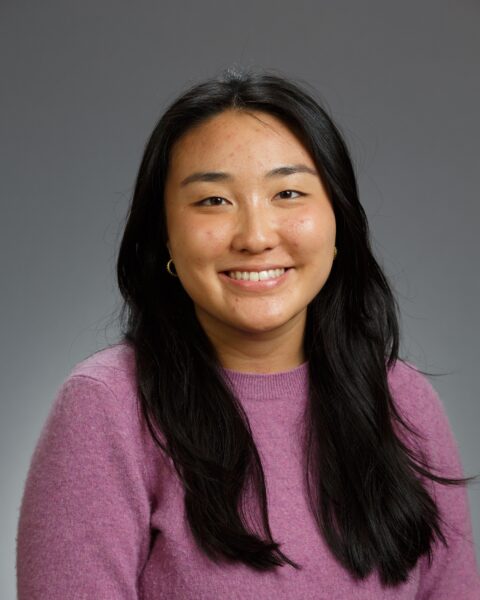 Aida Wen COE’24, “Development of Biocompatible Polyetheretherketone for Orthopedic Implants”
Aida Wen COE’24, “Development of Biocompatible Polyetheretherketone for Orthopedic Implants”
Mentor: Jeffrey Ruberti, COE, Bioengineering
Polyetheretherketone (PEEK) is a widely used material in medical devices because it mechanically mimics human bone. However, it integrates poorly with tissue, resulting in inflammation and implant rejection. Existing methods that improve its biocompatibility involve complex, high-cost processes with limited clinical transferability. Thus, a simpler method for increasing PEEK biocompatibility will significantly expand implant abilities and patient treatment. My objective is to develop a combination treatment of sulfuric acid, beta-tricalcium phosphate, and collagen to create modified PEEK that is biocompatible, retains its mechanical properties, and supports implant integration. I will share my results at Northeastern RISE and Society for Biomaterials.
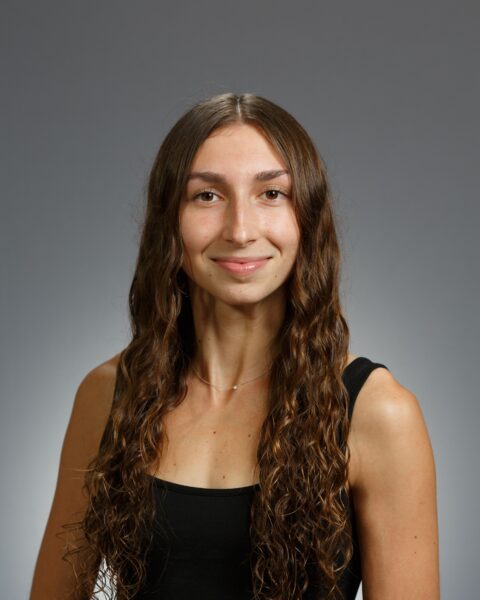 Julia Zalvino COS’24, “How Does Journaling About Body Functionality Affect Body Image in Young Women?”
Julia Zalvino COS’24, “How Does Journaling About Body Functionality Affect Body Image in Young Women?”
Mentor: Rachel Rodgers, Bouvé, Applied Psychology
The purpose of the research is to test whether journaling around positive body functionality (i.e. things that the body can do, rather than its appearance) can increase young women’s body satisfaction. Poor body image in young women is linked to adverse health outcomes, generating a need for effective intervention research. Northeastern Undergraduate women are recruited via a flier to journal daily about body functionality appreciation for eight weeks using a mobile intervention. They will complete three online surveys which will be examined through longitudinal analyses with intentions of deepening the understanding of the usefulness of journaling about body functionality appreciation.
